Image
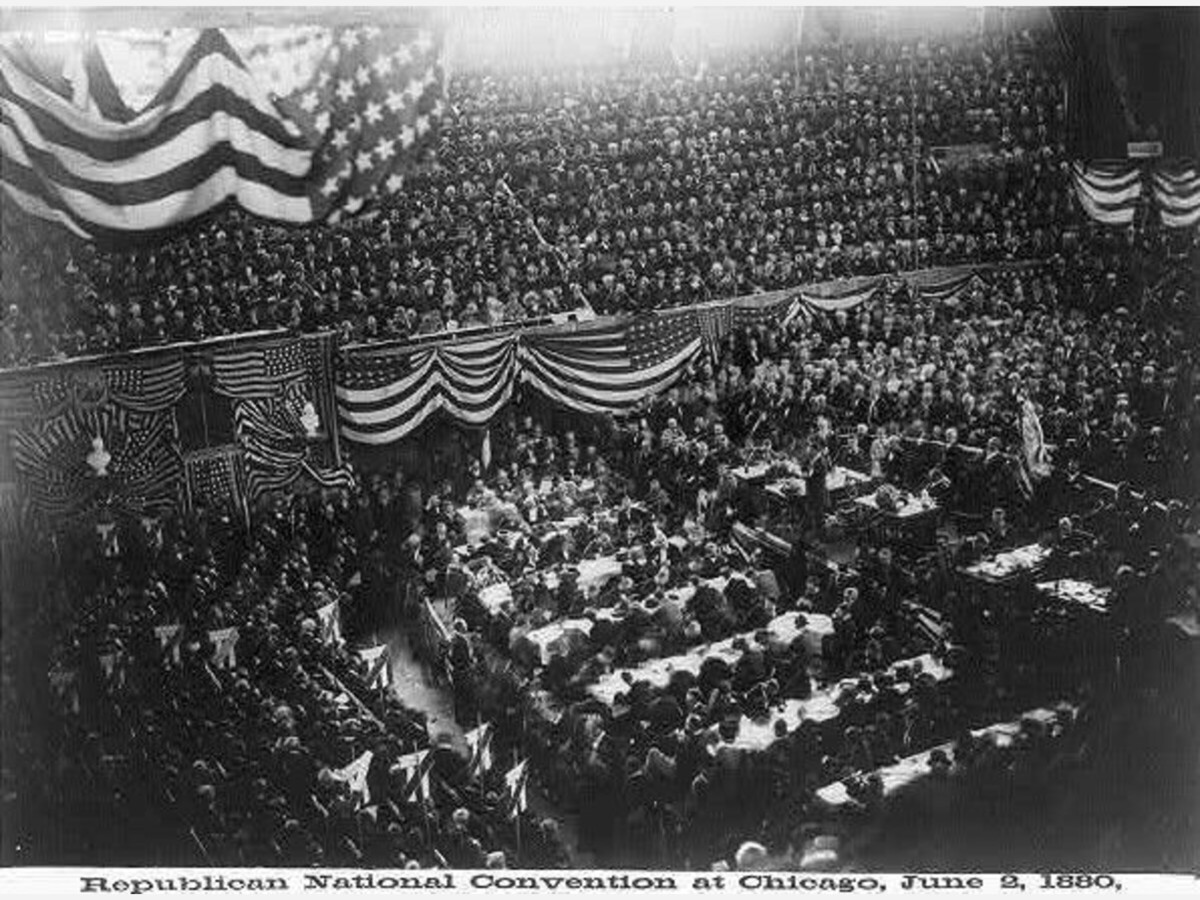

New Mexico Early Republican Leadership:
The Civil War created new opportunities for Anglo lawyers and businessmen who had moved into the territory to seek their fortunes. A political scene with so much active ferment provided tantalizing opportunities for enterprising Hispanos who were willing to work with U.S. officials and Anglo outsiders to acquire greater political and economic dominance in the territory.
Built on a partnership between these two groups, the Santa Fe Ring was the first and perhaps the most notable political machine in New Mexico’s history. This Republican-oriented group dominated territorial politics in the latter 19th century, counting among its ranks nearly every governor of the territory and most federal officials from 1865 through the late 1880s.
From the mid-1860s to the early 1880s, a string of Hispanos were elected Delegate on the Republican ticket. The Ring recruited lawyers, probate judges, land surveyors, doctors, and merchants, who combined forces for profit and political power. Through appointments to key territorial offices delivered by Republicans in Washington, D.C., and the support of the business class and a pliant press, they succeeded brilliantly. “Although located on the frontier,” writes historian Howard Lamar, “the ring reflected the corporative, monopolistic, and multiple enterprise tendencies of all American business after the Civil War.” Its chief means of influence was parlaying land into economic clout by purchasing, inflating, repackaging, and marketing a score of land grants doled out by Spanish rulers, and later by the U.S. government. The Santa Fe Ring’s most grandiose venture involved its speculative promotion of the two-million-acre Maxwell Land Grant
A future Delegate and U.S. Senator, Thomas Catron of New Mexico managed the Santa Fe Ring, a confederation of Anglo and Hispano entrepreneurs who exerted political and economic dominance of the territory after the Civil War.
Several Hispano Members of Congress were key Ring members or allies; Miguel Otero, Sr.; José Francisco Chaves; Mariano Otero; Francisco Manzanares; and the politically connected Perea family were all aligned with the Santa Fe Ring at some point in their careers. Miguel Otero, Sr., owned a piece of the sprawling Maxwell Land Grant. Chaves, despite some disagreements with the Santa Fe Ring, was particularly active as president of the territorial council after his tenure as Delegate. Mariano Otero proved useful as a longtime probate judge in Bernalillo County, and Manzanares was a partner with Stephen Elkins and Thomas Benton Catron in both the Maxwell Land Grant Company and the First National Bank of Santa Fe. Many of the Hispano Delegates who were not officially counted in its ranks sympathized with the Ring’s larger desire to corporatize the territory. Only Gallegos, consistently portrayed by Ring candidates as a throwback to the corrupt, anti-modern rule of the Mexican regime, remained unaligned with the Ring. By the early 1890s, Elkins had gone back East, New Mexico’s economy had diversified beyond the rampant land speculation of the early post-Civil War years, and the Santa Fe Ring faded in importance. The State of New Mexico was created in 1912.
One of the founding fathers of the Republican Party of New Mexico during the years of early statehood was Thomas B. Catron. At the time of New Mexico's admission to the Union, Catron owned a significant majority of land in the state. Due to that wealth, Catron was influential in shaping the party. Republican, Catron served as U.S. Senator from New Mexico from 1912 to 1917.
The first Republican Governor of New Mexico was Octaviano Larrazolo. He was the first Latino to serve in the US Senate as well.
Octaviano Larrazolo was admitted to the Texas state bar in 1888. He was elected district attorney for the Western District of Texas in 1890 and reelected in 1892. He held the position until 1894.
Larrazolo moved to Las Vegas, New Mexico Territory, in 1895. He practiced law in that town and became involved in Democratic politics and focused on civil rights for the Mexicans and Hispanos who comprised two-thirds of New Mexico's population. Larrazolo had difficulty finding success as a Democrat because most Latinos identified as Republicans. This difficulty is shown by the fact that he narrowly lost elections to become Territorial Delegate to the U.S. Congress in 1900, 1906 and 1908, though the 1908 election was extremely close and subject to several credible fraud charges.
In 1910, Larrazolo attacked the machine politics in New Mexico that he felt were exploiting Hispanic voters across the state. He feared New Mexico was close to becoming like the South where Jim Crow laws stripped African Americans of their rights. This speech is considered a milestone; he forced both Republicans and Democrats to acknowledge the concerns of Hispanics in New Mexico and became the most vocal leader in his generation. In the speech, he said "you [Hispanics] … have allowed yourselves to be controlled by other men but you will be controlled by bosses only as long as you permit the yoke to rest on you...Every native citizen must unite in supporting this constitution because it secures to you people of New Mexico your rights—every one of them; the rights also of your children and in such a manner that they can never be taken away...if you want to acquire your freedom and transmit this sacred heritage in the land hallowed by the blood of your forefathers who fought to protect it...Do not wait until you are put in the position of Arizona which in two years will be able to disfranchise every Spanish speaking citizen."
In 1911, the New Mexican Territory held a constitutional convention in preparation for its entering the Union. Larrazolo was one of the Latino delegates chosen to attend the convention. To his displeasure, the State Convention of the Democratic Party denied his request that half of all statewide nominees be Hispanic to represent the 60 percent of the population of New Mexico that was Hispanic. Despite this, Larrazolo was able to have considerable success in implementing pro-Latino measures in the New Mexico Constitution. He and other people insisted that the Spanish-speaking population of New Mexico be protected by the new state constitution. The reason for this was that Larrazolo did not want the rights of the Spanish-speaking people to be stripped when New Mexico entered the Union because he was afraid that the Union's segregation policies applied to African Americans would be used to justify the infringement of Latinos' rights in New Mexico once it entered the Union.
Larrazolo and the other Latino delegates succeeded in implementing pro-Latino measures and language into the New Mexico State Constitution. The new Bill of Rights stated that (Article II Section V) "The rights, privileges and immunities, civil, political and religious, guaranteed to the people of New Mexico by the Treaty of Guadalupe Hidalgo shall be preserved inviolate." The Education Article, (XII., Section 8), gave the legislature authority to provide training for teachers in public schools so that "they may become proficient in both the English and Spanish languages, to qualify them to teach Spanish-speaking pupils. . .". Section ten of the article assured the right of children of Spanish descent to attend public education institutions and prohibited the establishment of separate schools. To the dismay of Larrazolo, the state Democrats unsuccessfully tried to prevent the ratification of the state constitution because of these pro-Latino provisions, and because of this he became a Republican and remained one for the rest of his life.
Because Larrazolo advocated so strongly for Latino rights, many New Mexico politicians considered him a race agitator. Even though many New Mexico politicians resented him for this, Larrazolo still managed to gain a lot of political credibility especially from Latinos who were glad for the work he had done for Latinos. His popularity throughout New Mexico caused the New Mexico Republican party to nominate him for governor of New Mexico. The campaign in 1918, though, was an intense one that exposed some factions within the Hispanic community. His Democratic opponent, Félix García, claimed that Larrazolo's birth in Chihuahua precluded him from understanding the concerns of "native New Mexicans." He was elected Governor of the State of New Mexico in 1918, becoming the first Mexican-born Latino to be governor of New Mexico. Larrazolo's narrow victory, however, seemed to quiet most of the debate about whether he could authentically advocate on behalf of the Spanish-speaking population.
Throughout his time as governor, he had various controversies and successes. In the first year of his term, he declared martial law in the state to suppress a coal mining strike. In the time the fear of anarchism was rampant and this plus the gravity of the strike convinced Larrazolo to declare martial law. He was also criticized for pardoning Mexican troops who raided parts of New Mexico with Pancho Villa. He believed that since the Mexican troops were acting under orders from their superior that they should not be held accountable. He also supported and signed a new income tax law that angered his Republican party. The aspects that he won praise for was his support for the creation of the League of Nations. Larrazolo advocated for bilingual education and supported the civil rights of Mexican immigrants in the state. He was also a supporter of the women's suffrage amendment to the United States Constitution.
Since he angered the Republican party of his state many times throughout his time as governor, the New Mexico Republican Party did not renominate Larrazolo to be governor of New Mexico. This caused him to briefly return to El Paso County, Texas to practice law. He opened a firm in El Paso with Nick Meyer and practiced in New Mexico and Mexico. In 1922 Larrazolo opened an office in Albuquerque as well.
However, he did not stay out of politics for too long. In 1923, the state legislature of New Mexico nominated him to become governor of Puerto Rico. He lost this bid but he used the jolt of political popularity that he received by his consideration to be appointed governor of Puerto Rico to reenter politics in New Mexico. He ran and lost an election to become a justice of the New Mexico supreme court in 1924.
However, he was elected in 1927 to the New Mexico State House of Representatives. But then in 1927, the Democratic U.S. Senator from New Mexico Andrieus Jones died and Larrazolo ran and on 6 November 1928 won for Jones's remaining term. This made Larrazolo the first Mexican-American to serve in the U.S. Senate.
Unfortunately, he was by that time very old and suffered with many illnesses. Because of this he only was able to make it to one session of Congress and he was only able to introduce one legislative action. This action called for the establishment of an industrial school in New Mexico for the Spanish-speaking youth to promote equal opportunity. Larrazolo died on April 7, 1930.
The most famous Republican from Otero County, New Mexico in the early years of Statehood leading the Republican Party of New Mexico was Gerald Champion.
He was killed Tuesday, February 3, 1948, while serving as Chairman of the Republican Party of New Mexico, in a plane crash atop a 9,000-foot peak, about 8 miles south of Cloudcroft, New Mexico.
The wreck was finally sighted Sunday evening, February 8, on the 5th day of a search that began on the previous Wednesday. Gerald D. Champion was a prominent Otero County businessman who was chairman of the Otero County Hospital Association at the time of his sudden and unexpected death. The accident occurred during the fund drive for the first hospital building in Alamogordo, New Mexico.
The hospital was completed some 18 months after his death and was named Gerald Champion Memorial Hospital. Champion was the mayor of Tularosa, New Mexico, operated hardware and building supply stores in both Alamogordo and Tularosa and was active in many civic groups. When a new, vastly larger hospital was completed 50 years later, the name Gerald Champion was retained. Gerald Champion Regional Medical Center is named in his honor.
Since first emerging in 1854 to fight expansion of U.S. slavery and the implementation of the Kansas-Nebraska Act, the Republican party (also known as the GOP, or “Grand Old Party”) has changed massively to become the influential political entity that it is in 2021. Since the Republican Party became more aligned with business issues, it entered the 20th century more closely associated with upper-class politics.
The party suffered during Franklin Delano Roosevelt’s rise amidst the Great Depression, when many Americans castigated the party for its resistance to offering aid to ordinary citizens during the crisis. Indeed, Republicans won only four elections from 1932 to 1980, and only made up the Congressional majority for about four years.
However, the GOP gained traction after World War II, when white, conservative Southerners began joining the party due to its growing conservatism and resistance to big government—an ethos best demonstrated in the politics of popular conservative president Ronald Reagan.
This proceeded into the 21st century, when George W. Bush took the White House in 2000 and enacted sweeping federal security measures. The party changed once again with the election of reality TV’s businessman-turned-politician Donald Trump, who implemented controversial legislation against immigration and in favor of larger corporations. With Democrat Joe Biden now in the White House, Stacker looks back to examine how Republicans have changed over the past decades to get to this point.
In order to determine what Republican party history occurred during the past 89 years, AlamogordoTownNews.com, AlamogordoConservativeDaily.org and Stacker compiled a list of major Republican political events from 1931 to 2020, with the help of numerous news sources, historical records, and government websites.
Starting with Republicans becoming a Congressional minority in 1931 and ending with fissures in the party in 2021, read on to find out what happened within the Republican party’s history during the year you were born.
You may also like: Heart and Soul of the Republican Party
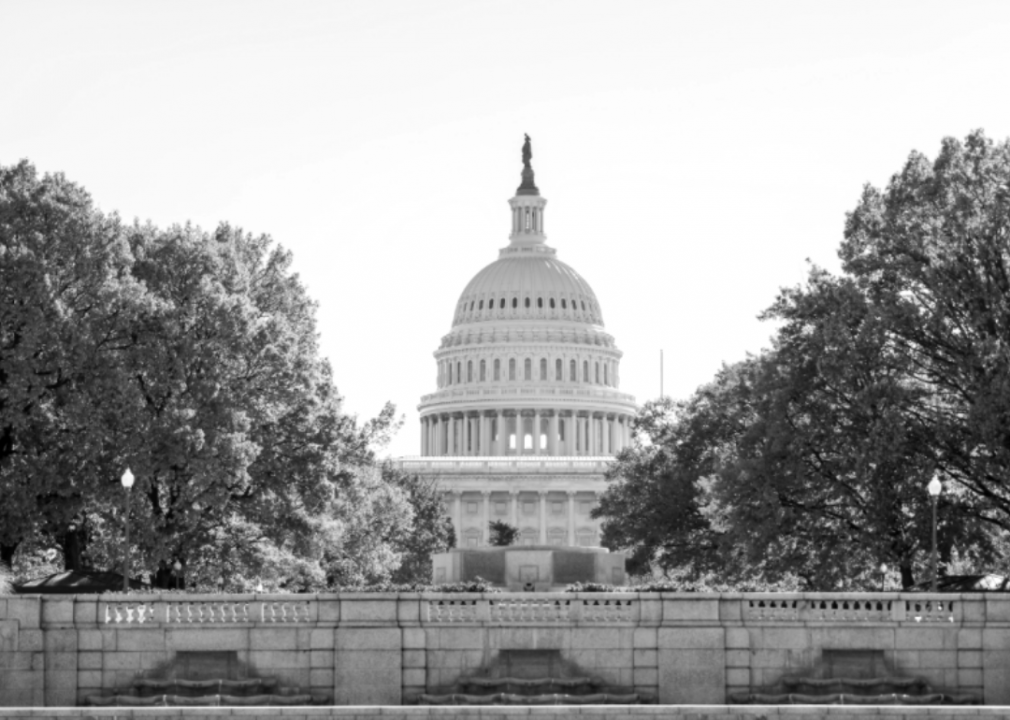
After the Democrats—who ultimately took both houses of Congress in the 1930 elections—took office, Republicans became a minority in the federal government. However, they later retook Congress in 1946.

Held amidst the Great Depression, the 1932 presidential election saw Republican incumbent President Herbert Hoover run against Democratic candidate Franklin D. Roosevelt (New York’s governor). Although Hoover faced little contest in terms of receiving the Republican nomination, FDR eventually won by a landslide by promising economic recovery through his “New Deal” plan.
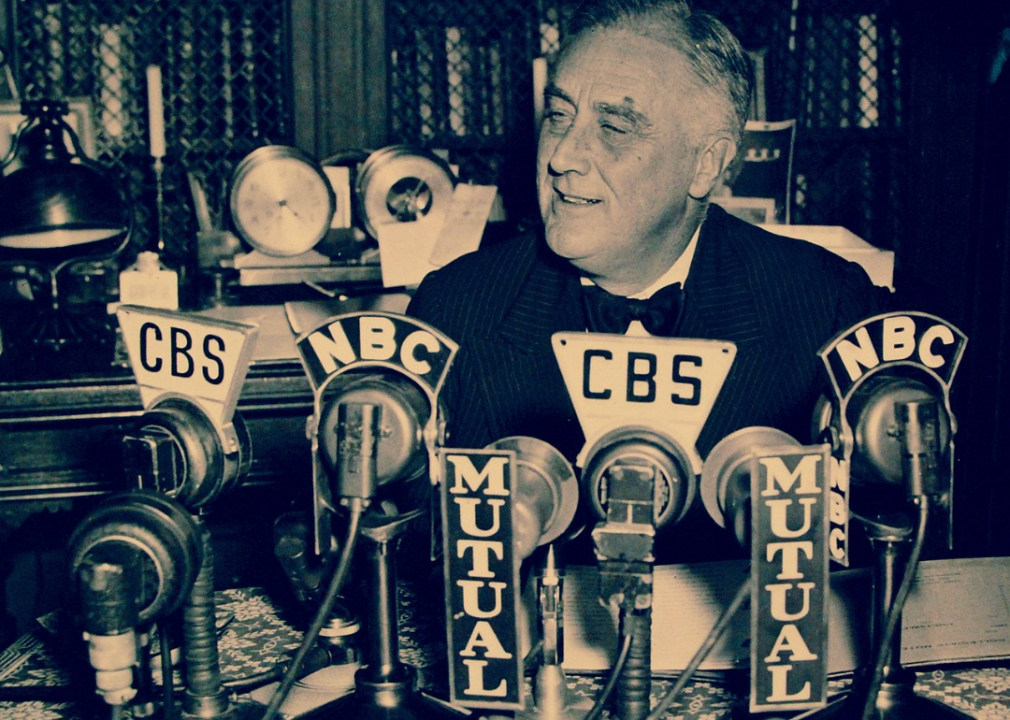
Early 1930s Republicans’ legislative agenda was already at a disadvantage when Democratic President Roosevelt took over and began implementing sweeping New Deal legislation. However, they became even more of a minority when Democrats upheld their majority during the 1933 midterm elections.

By the time that the winners of the 1933 midterm elections were sworn in, there were 71 Democrats in Congress, but only 25 Republicans. A similar divide also occurred in the House of Representatives, leaving Republicans relatively unable to effectively protest FDR’s Second New Deal.

FDR’s second stage of the New Deal included major programs like Social Security, rural electrification, and the Banking Act of 1935. However, many Republicans found it akin to socialism and were vocal detractors of the legislation.
You may also like: Heart and Soul of the Republican Party
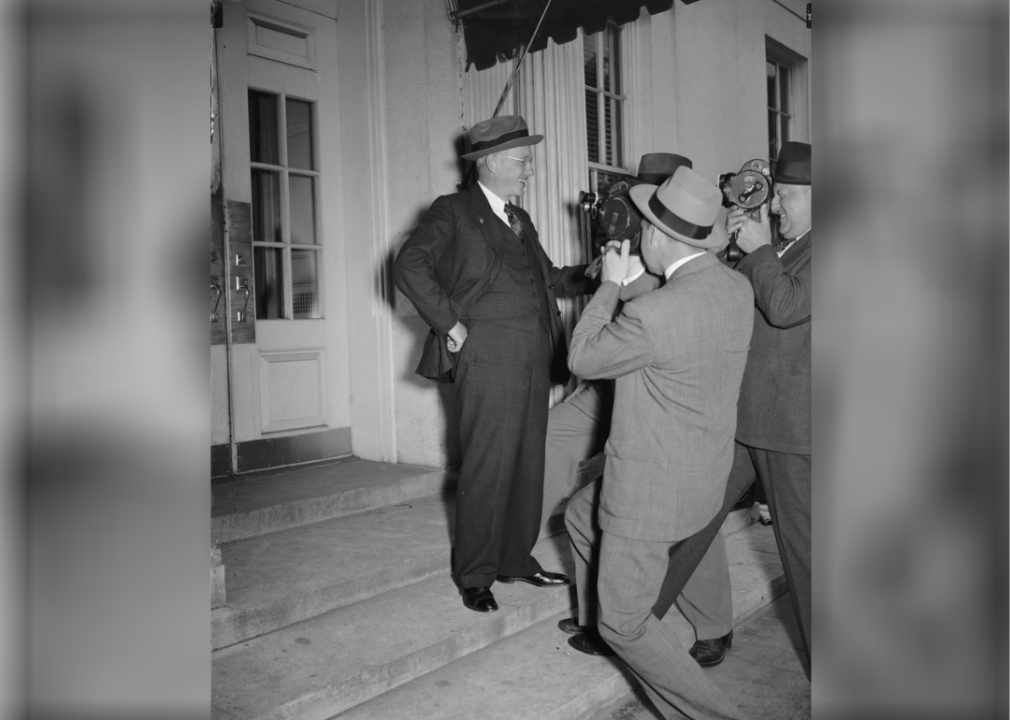
After receiving the presidential Republican nomination over more progressive Senator William Borah, Kansas governor Alf Landon ran in hopes of unseating incumbent Democratic President Franklin D. Roosevelt. While Landon criticized the New Deal’s inefficiency, Roosevelt achieved another landslide victory.
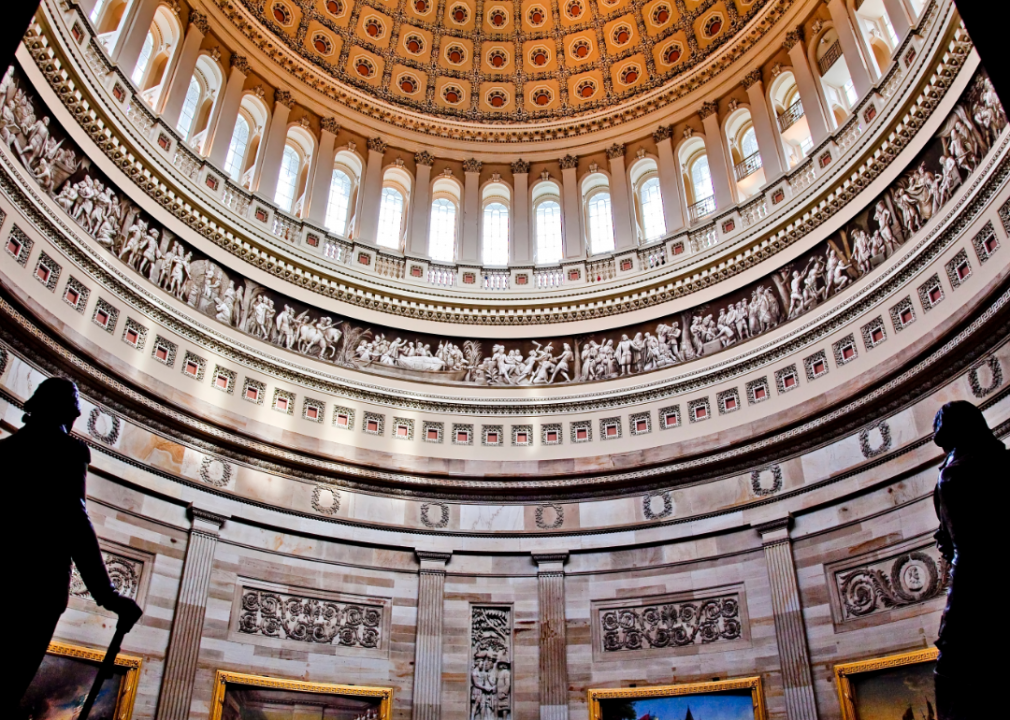
A group of conservative Republicans and Democrats known as the “Old Right” gathered together in protest of the New Deal and FDR. By 1937, they formed a conservative coalition that remained in Congress until 1964.
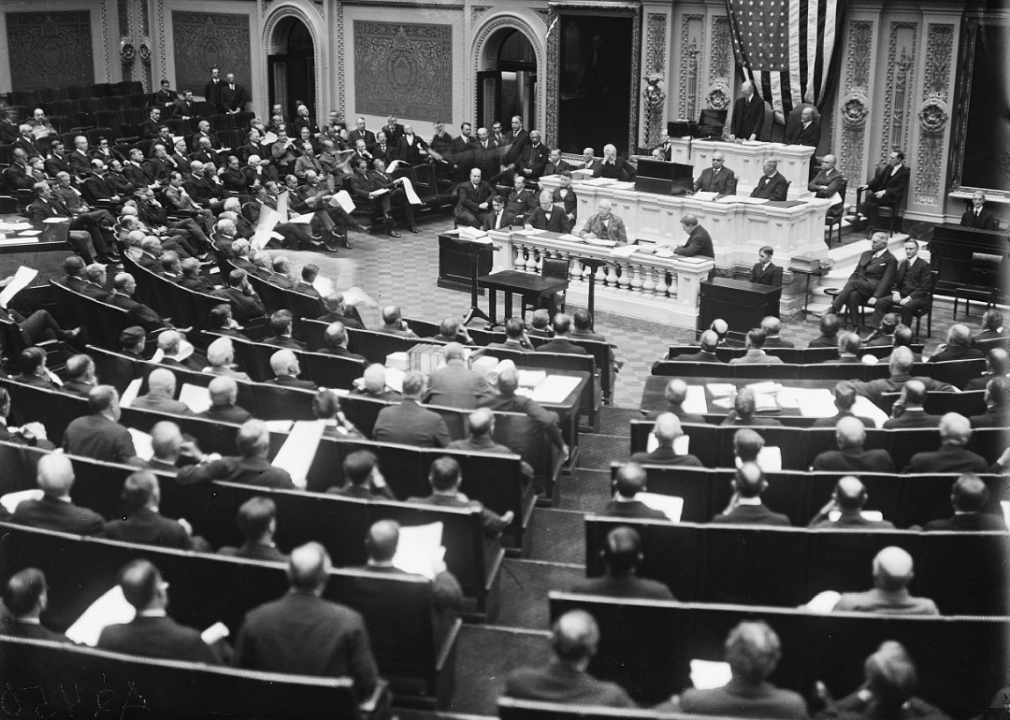
While they remained a minority, Republicans had good news in the 1938 midterm elections, as Democrats lost six Senate seats and 71 House seats. Furthermore, they remained a uniformly united political party, while the Democrats were divided after FDR’s failed attempt to pack the court with conservative Democrats via the Judicial Procedures Reform Bill of 1937.
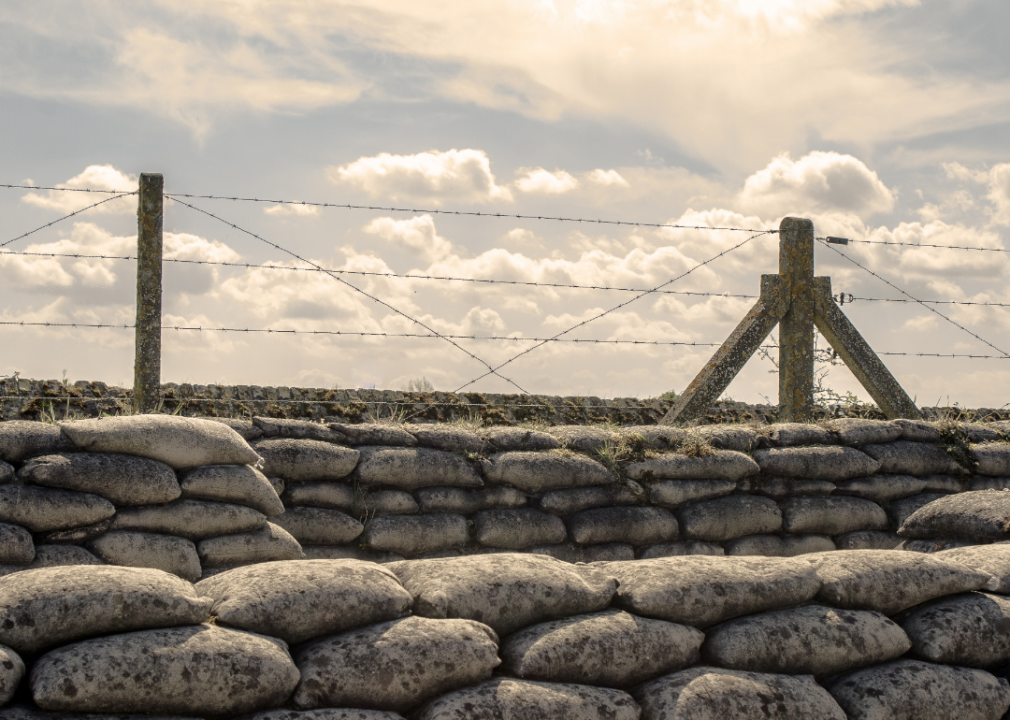
Republicans soon became divided over whether or not to offer aid to the United Kingdom, a U.S. ally, as World War II began. Isolationists (such as Arther Vandenberg and Robert A. Taft) wanted to avoid getting indirectly involved with the war, while internationalists (like Frank Knox and Henry Stimson) wanted to help the country.
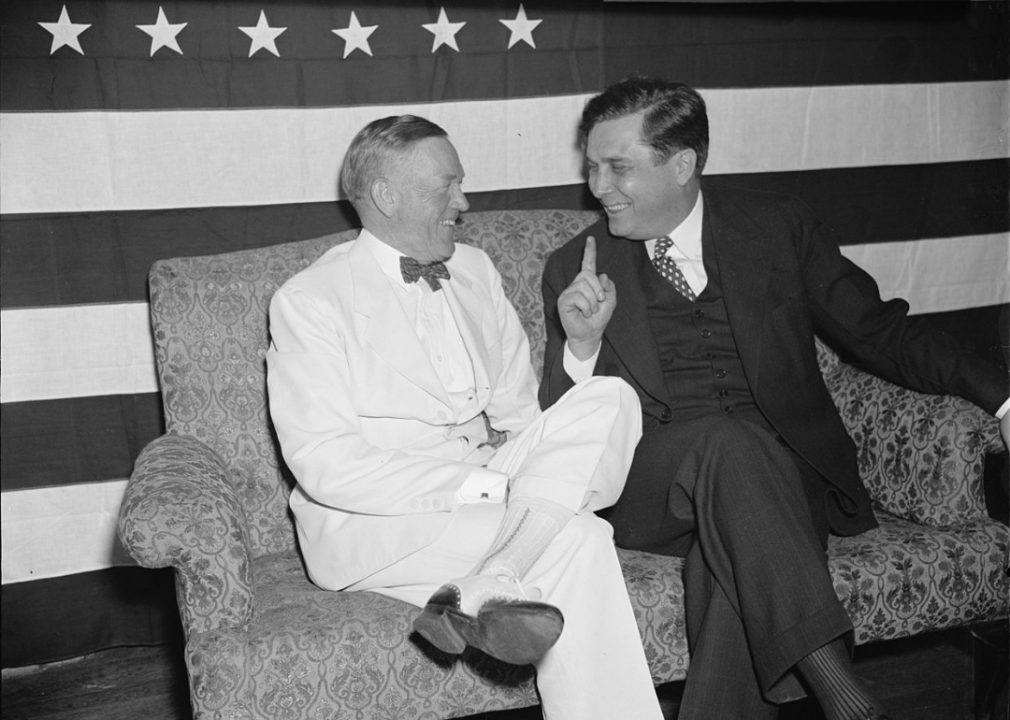
The event was only aired by New York’s W2XBS station. During the convention, which took place in Philadelphia, lawyer Wendell Willkie was nominated as the Republican presidential candidate.
You may also like: Heart and Soul of the Republican Party
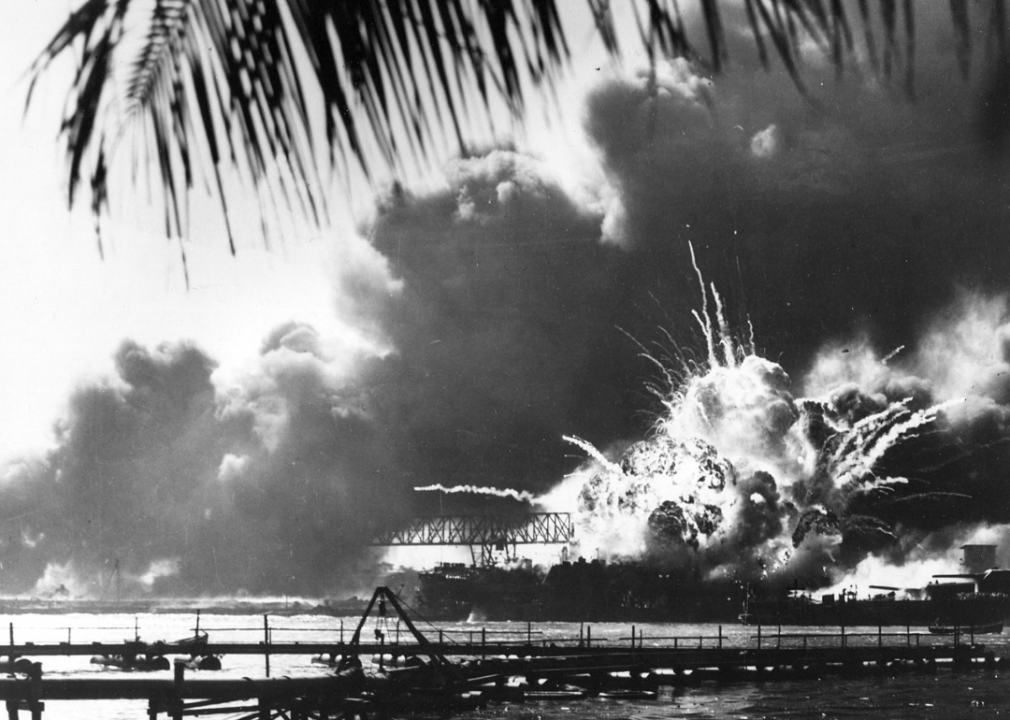
The debate amongst Republicans over whether or not to get involved in the war ended after Japanese forces attacked the U.S. military base of Pearl Harbor in Hawaii. After the attack in December of 1941, the United States officially entered World War II.

In this election, which took place during FDR’s third term in office, Republicans picked up important seats in Congress. Republicans won 209 House seats, while Democrats took 222 seats, making it the party’s most successful election since the 1930s.
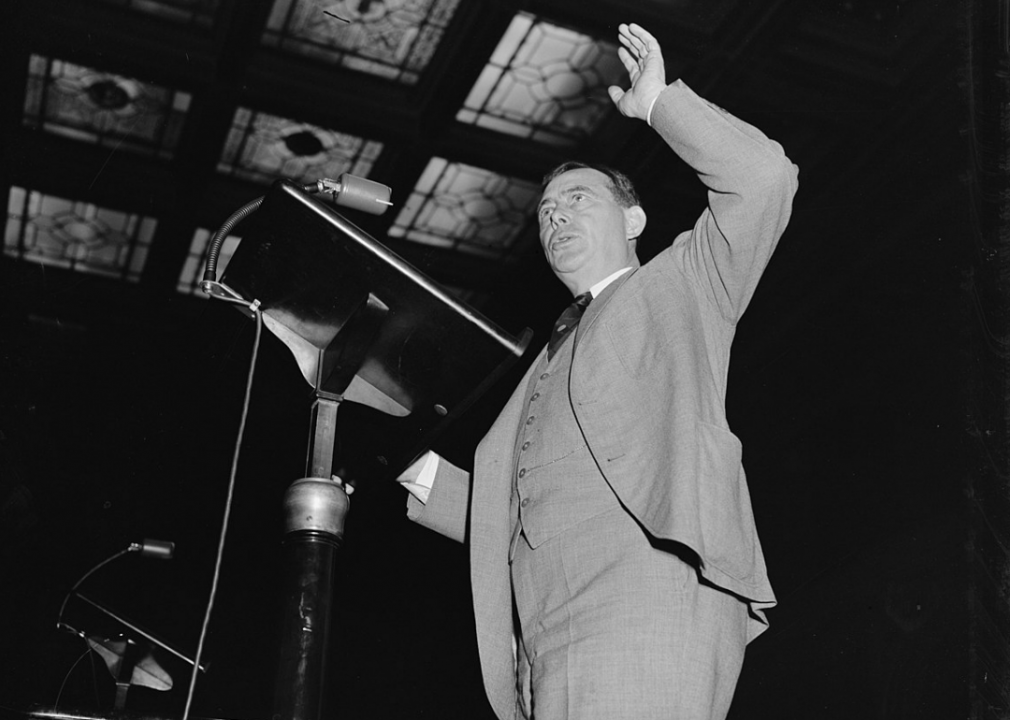
Although the 78th Congress still contained a Democratic majority in both chambers, Republicans were able to make more substantial changes thanks to the gains they achieved in the recent midterm elections. Joseph W. Martin Jr. served as the Republican minority leader during the session, and many New Deal assistance programs were repealed because of a wartime production boom.

During this World War II-era election, New York Republican governor Thomas E. Dewey lost to FDR, who was elected to a historic fourth presidential term. During his campaign, Dewey accused the president of indirectly helping American communists and large Democratic organizations through his legislation.
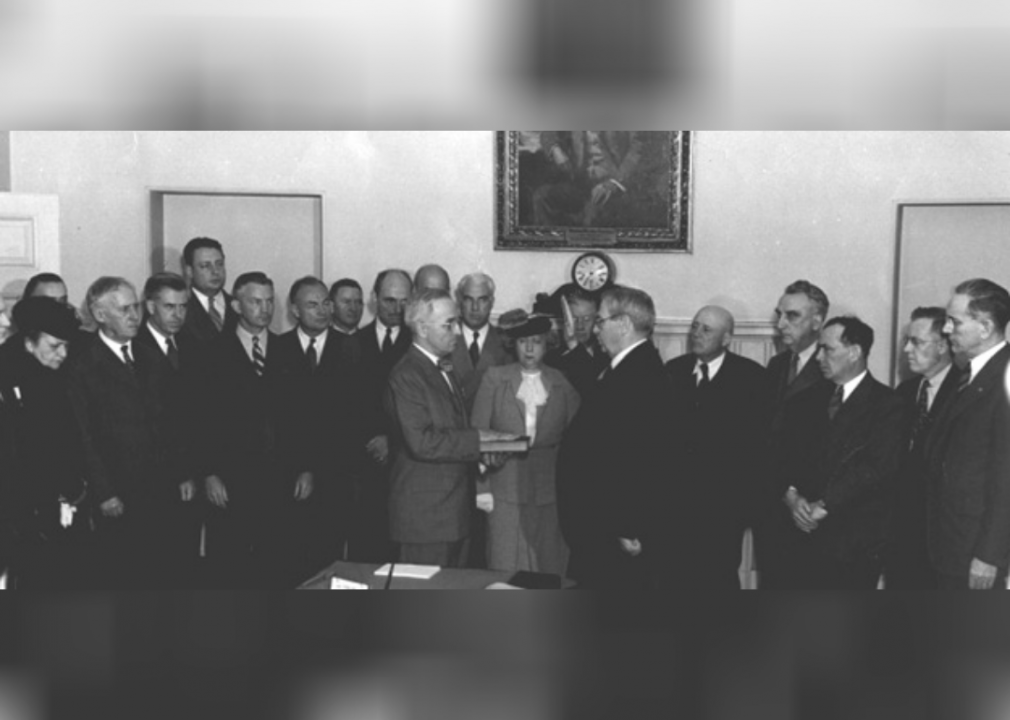
Roosevelt died just months into his fourth term, leaving Vice President Harry S. Truman as his successor. Truman was criticized amidst mounting labor strikes and post-war unrest, which Republicans capitalized on in order to retake Congress the following year.
You may also like: Heart and Soul of the Republican Party

This marked the first time the political party had controlled Congress in 16 years. Since new president Harry S. Truman was not receiving the same popularity as his predecessor (President Franklin D. Roosevelt, who he succeeded after his death), 54 Republicans were able to successfully gain House of Representatives seats.
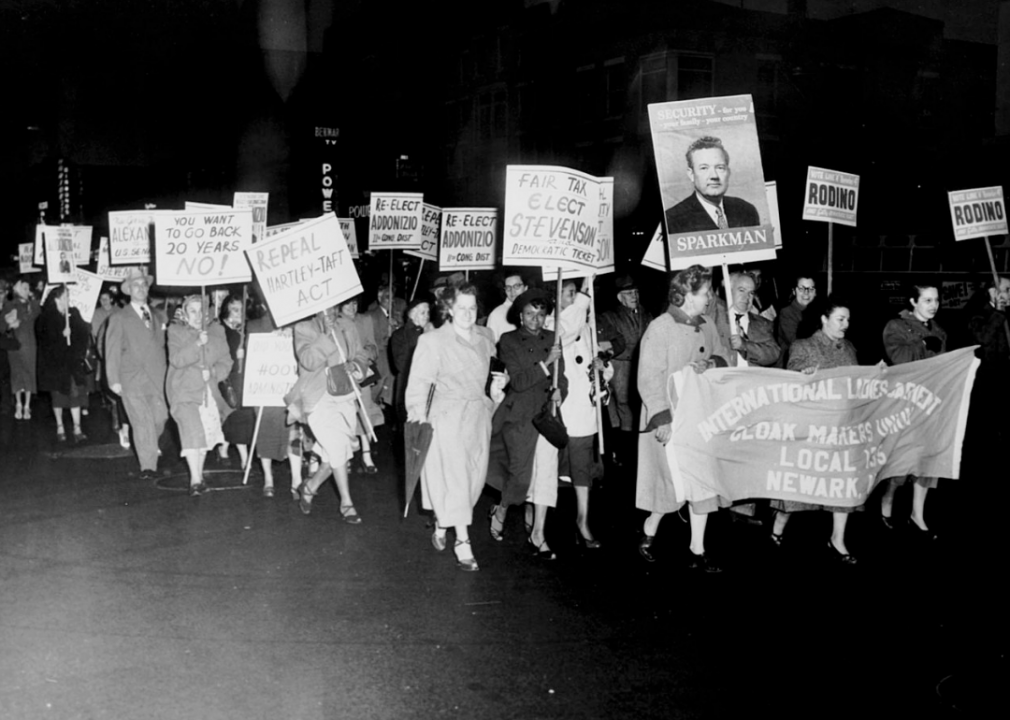
Enacted by a Republican-majority Congress, the Taft-Hartley Act restricted the autonomy and power of U.S. labor unions. It was later passed over President Truman’s veto in summer of 1947.
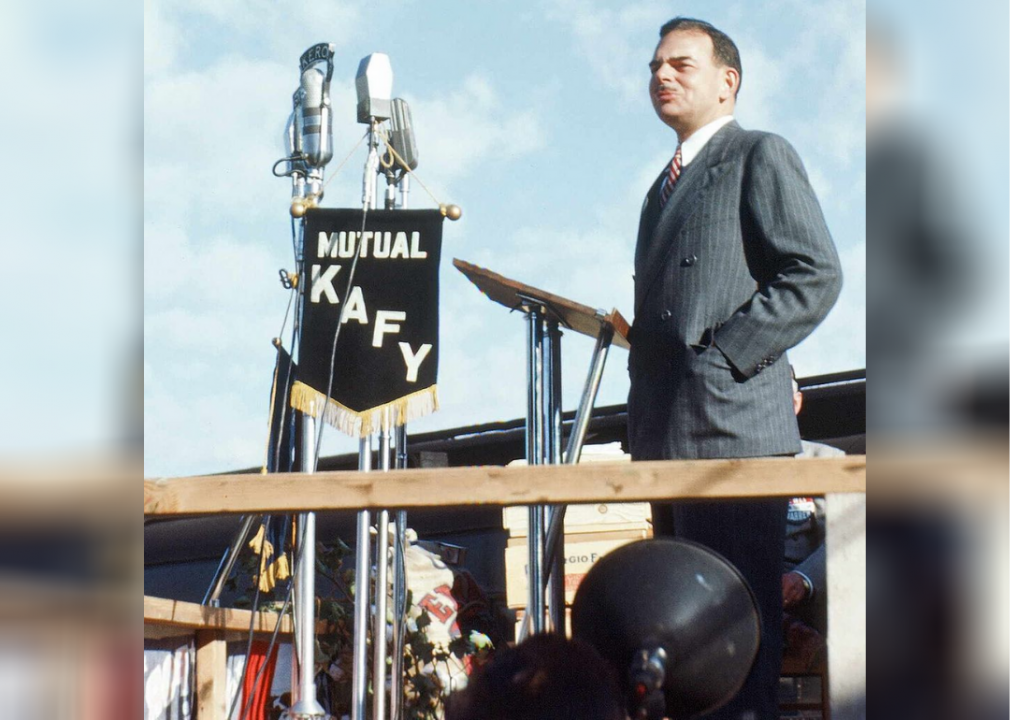
At this convention, Thomas E. Dewey once again received the Republican presidential nomination, this time running against President Harry S. Truman. That year’s RNC, which was held in Philadelphia, also focused on a crackdown on communism and an extension of Social Security for Americans.
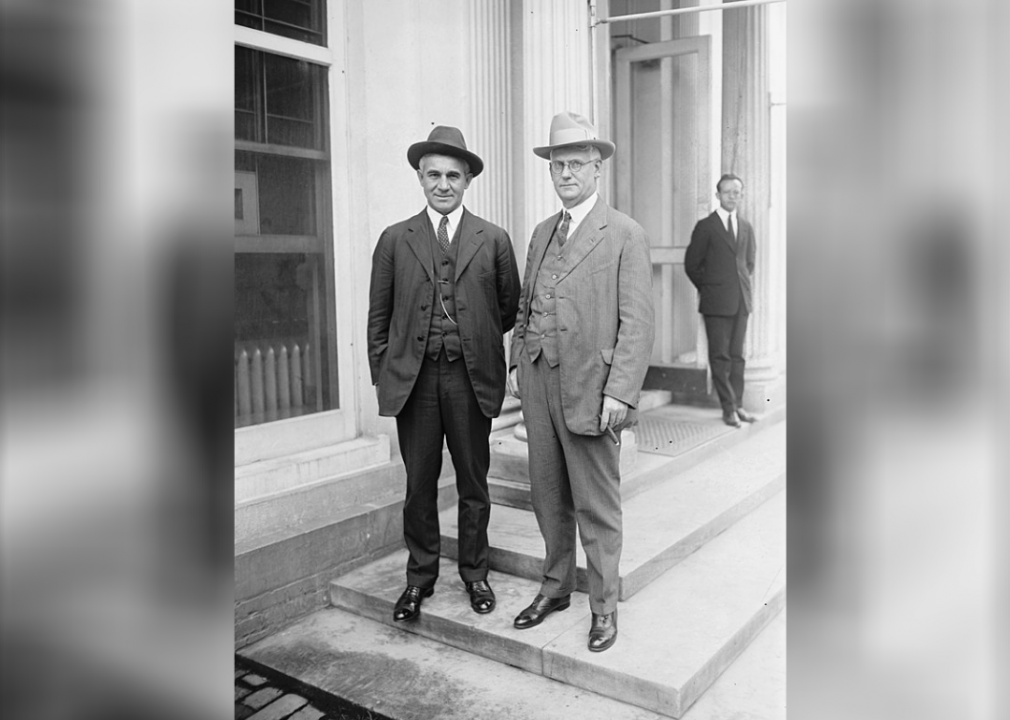
Starting in 1948, Democratic lawyer Frank E. Hook attempted to unseat Michigan Republican representative Homer Ferguson, who had held the role for a decade. He ultimately failed, and Ferguson won his second term race with over 44,000 votes.
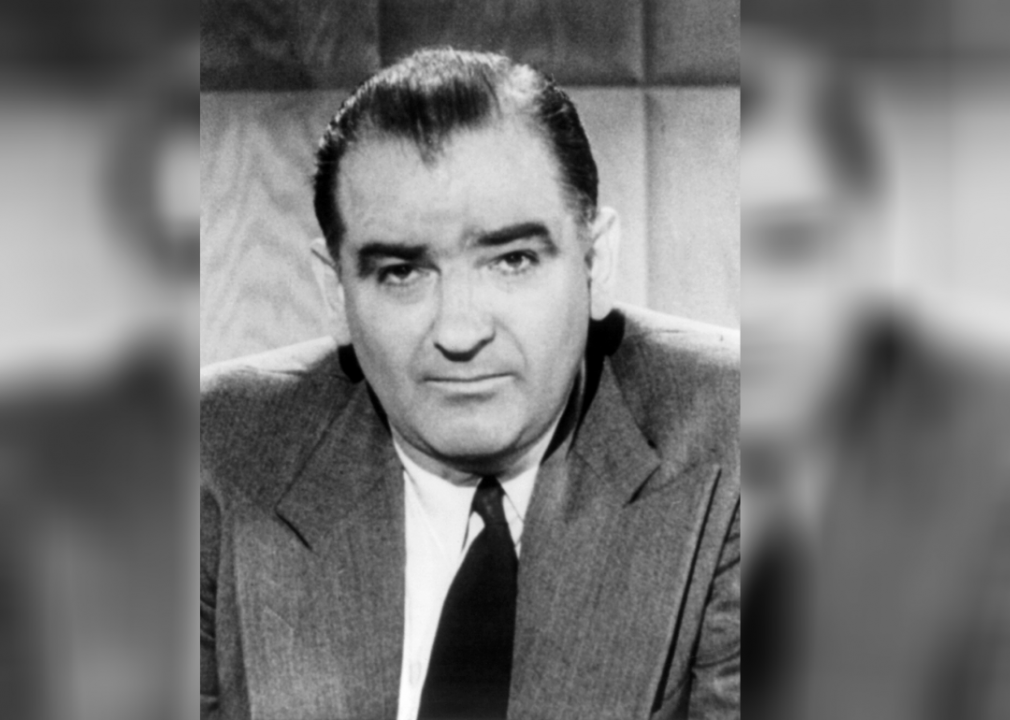
Republican Senator Joseph McCarthy conducted an aggressive campaign to snuff out supposed communist individuals and institutions in the United States from 1950 to 1954, that was eventually known as McCarthyism. Although most of these people did not belong to the Communist Party, many were fired from their jobs and/or blacklisted anyway.
You may also like: Heart and Soul of the Republican Party
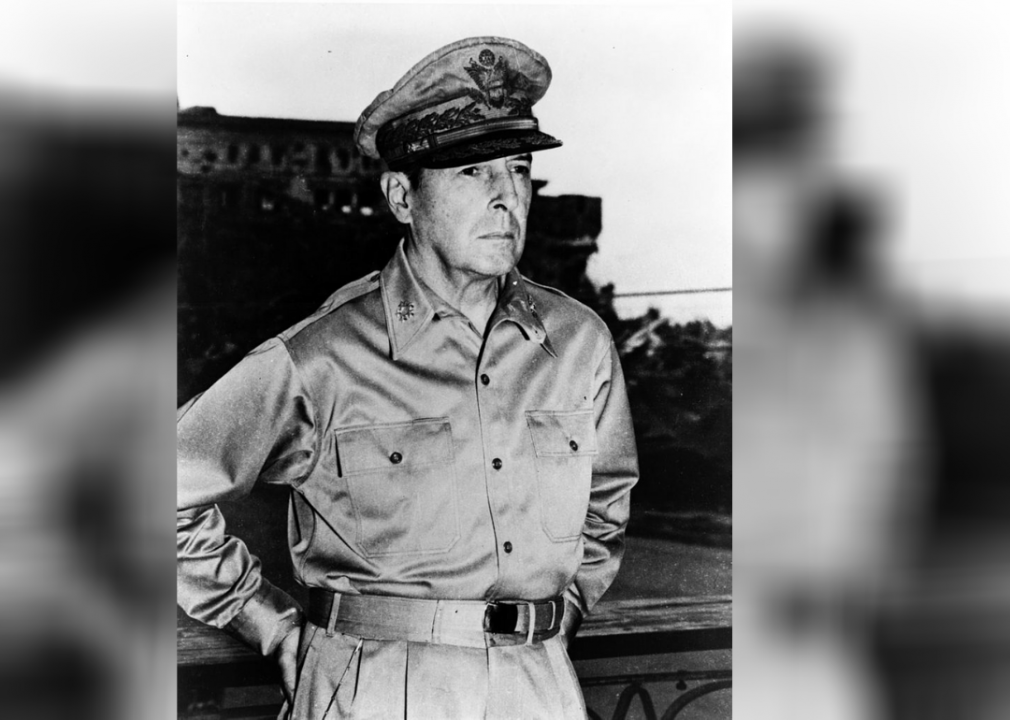
The five-star general, who played a key role in Pacific warfare during World War II and was a former Chief of Staff of the U.S. Army, was fired for his remarks about using U.S. nuclear weapons on China during the Cold War. The public were largely against MacArthur’s firing, and by early 1952, Truman’s approval rate fell to 22%.

Eisenhower didn’t just defeat Democratic nominee Adlai Stevenson, he also ended a string of Democratic presidential wins dating back to 1932. He faced many major national and international events during his time in the White House, from the Korean War to the civil rights movement.

In his speech to the UN General Assembly, the Republican president called for the enlightenment of the American people and their allies about nuclear weapons. This led to the “Atoms for Peace” program, which did just that under the threat of Cold War nuclear warfare.
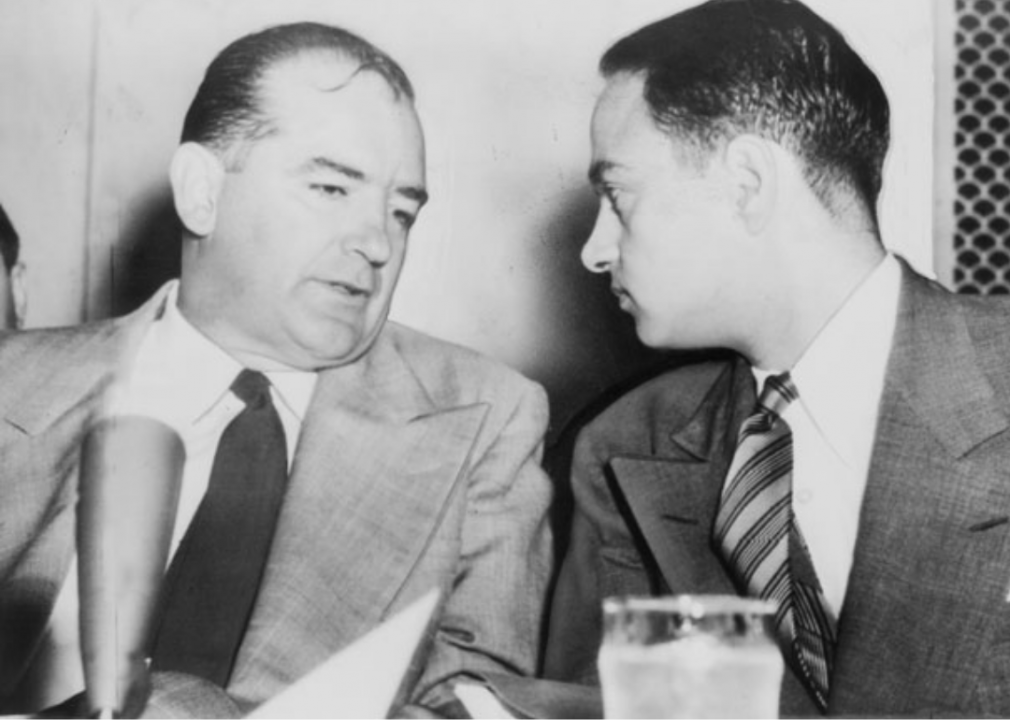
The rare decision to silence the Republican senator came after his controversial investigations of alleged communists in American society. After accusing a number of U.S. Army officers of communist sympathies, President Eisenhower finally ordered an investigation into McCarthy’s work, leading to his censuring.
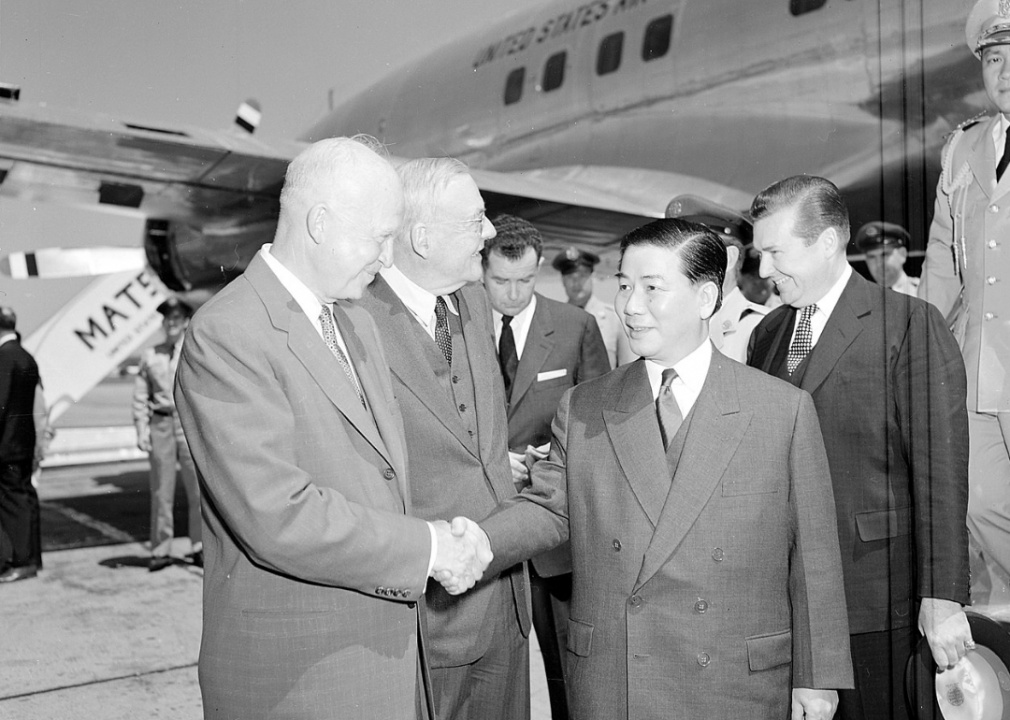
In one of the very earliest instances of American involvement in the Vietnam War, Eisenhower sent the first U.S. military advisors to South Vietnam in early 1955. They went to train the South Vietnamese Army for combat against the North Vietnamese.
You may also like: Heart and Soul of the Republican Party
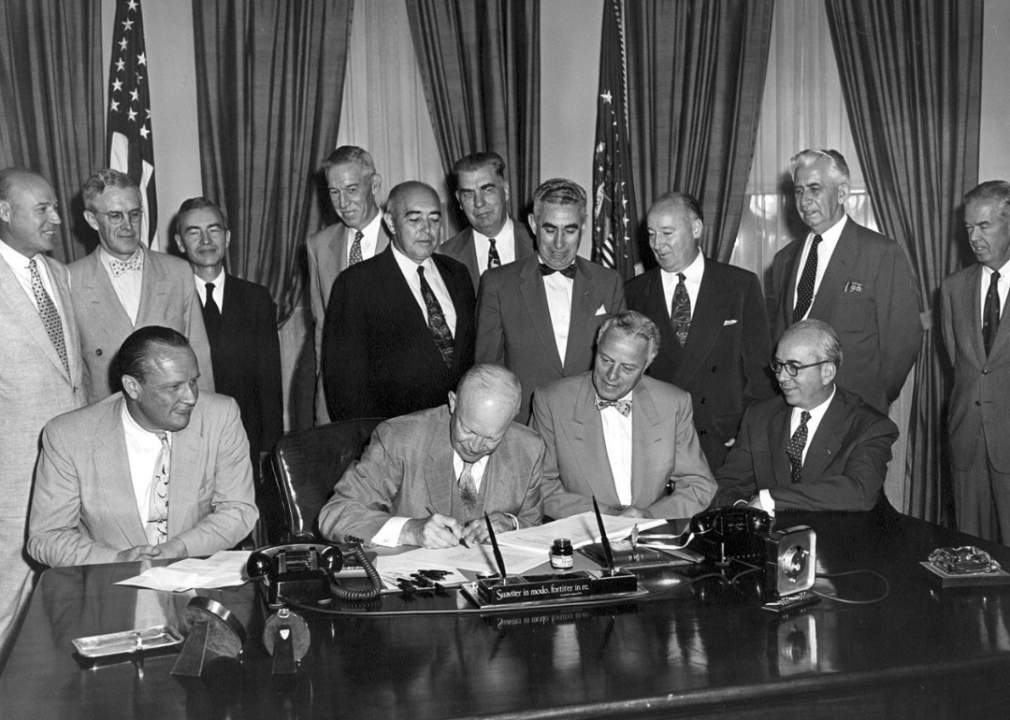
Eisenhower had a presidential election rematch with his Democratic former opponent, Adlai Stevenson, who he defeated once again. The president’s reelection campaign was bolstered by a steady American economy and a recent end to the Korean War.
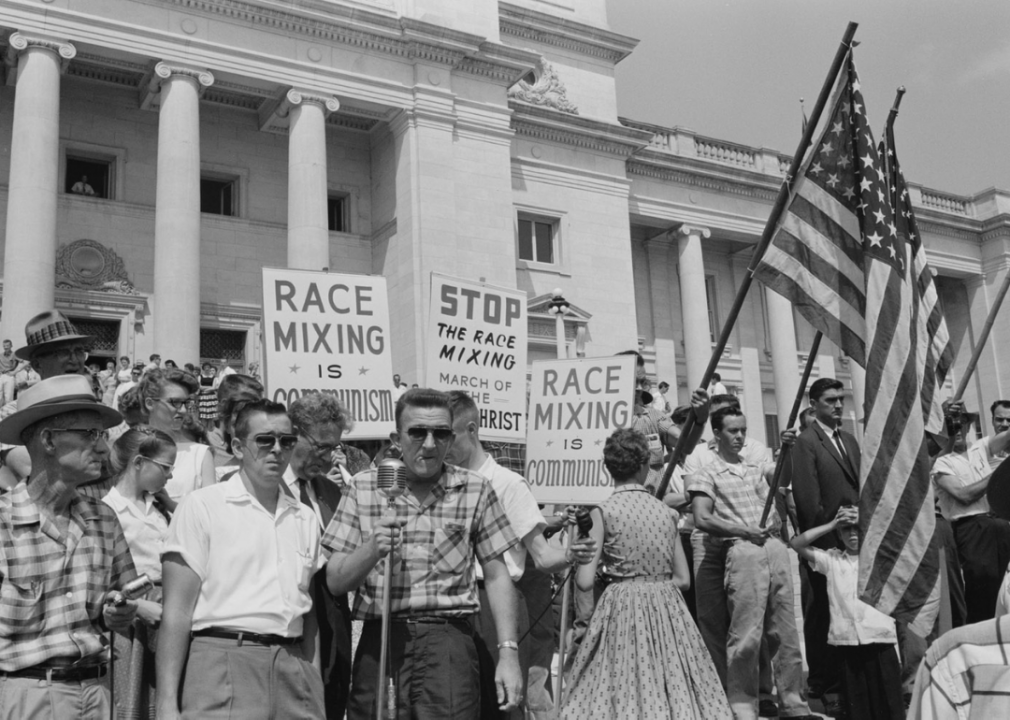
Although Eisenhower was known for his more centrist conservatism, he did ultimately send federal troops to protect African American students in Little Rock, Arkansas from white segregationists' anti-Black violence as they began school at a recently desegregated high school. In doing so, his actions marked one of the first times where the national government intervened in terms of state-by-state racial segregation.
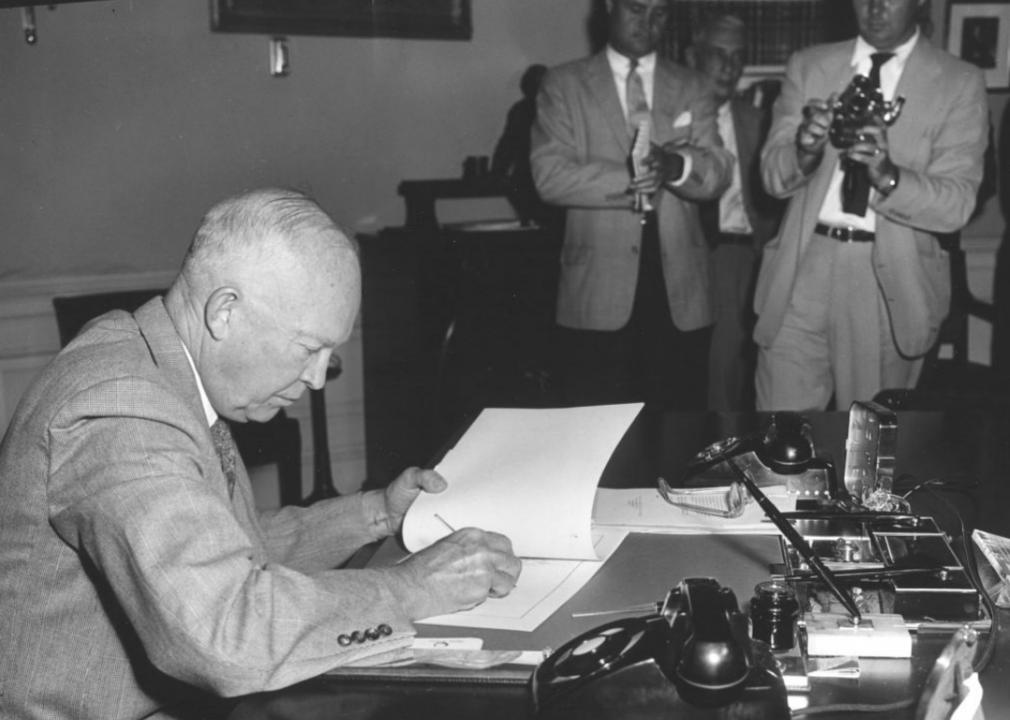
The process of Alaska becoming a state was more complicated than the process for some other states, because it bordered the Soviet Union and joined the U.S. during the Cold War. However, Eisenhower ultimately signed the Alaska Statehood Act in summer 1958.
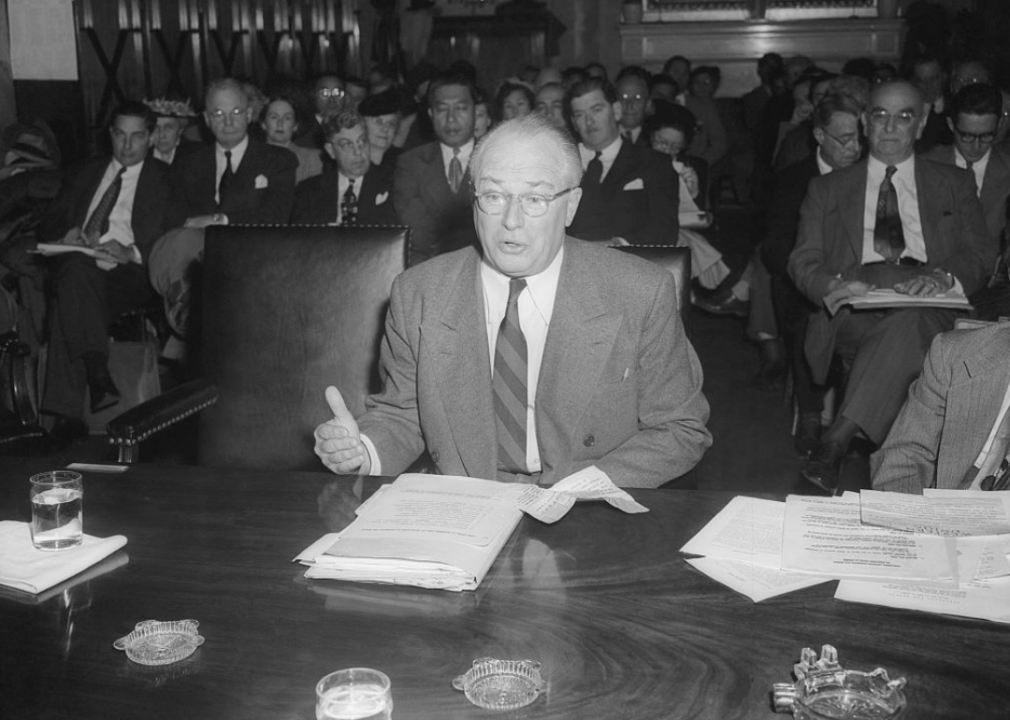
Eisenhower voiced support for Hawaiian statehood early in his presidency, a step that Hawaiian citizens echoed when they voted on a referendum to accept U.S. statehood in June 1959. In August 1959, the president signed a proclamation making Hawaii the 50th state.
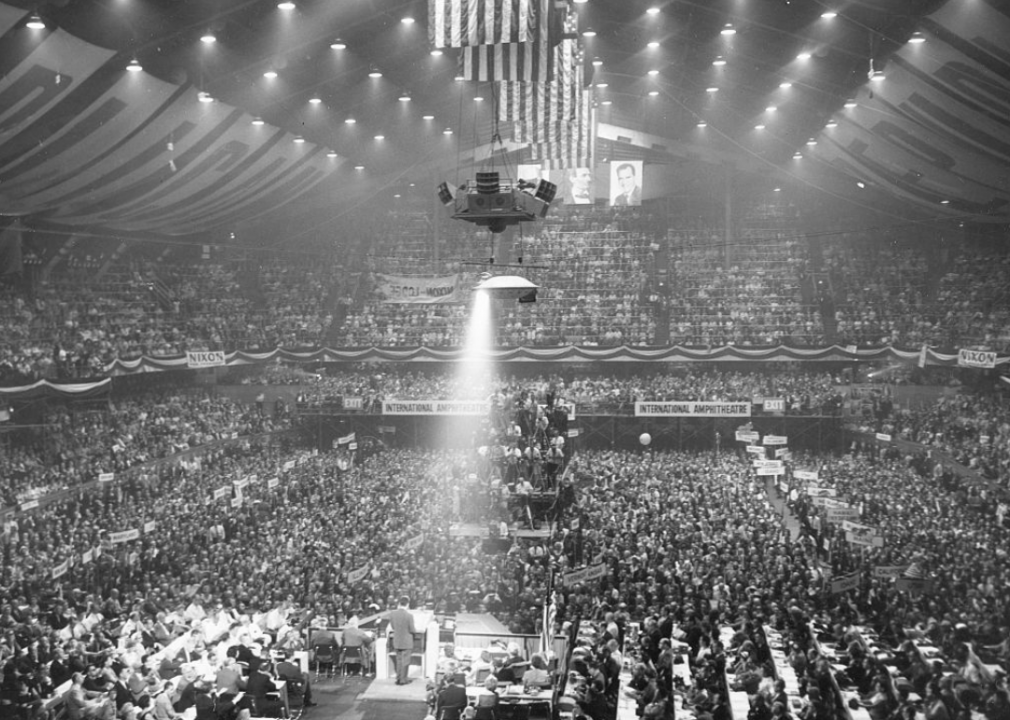
At the time, Hoover was the only living former Republican president. He gave a farewell speech on the opening day of the Chicago convention, returning to the place where he’d been renominated as the Republican presidential nominee in 1932.
You may also like: Heart and Soul of the Republican Party
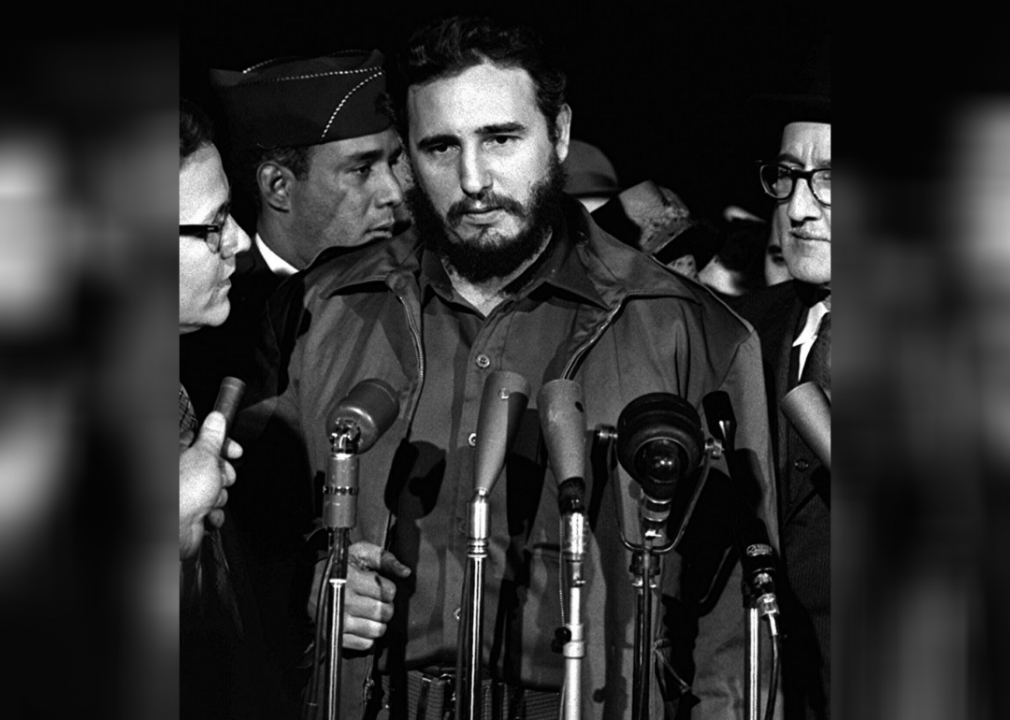
The Republican president did so by closing the U.S. embassy in Havana as U.S. relations with leader Fidel Castro grew more and more strained during the Cold War. Soon afterwards, Eisenhower’s administration authorized the training of Cuban immigrants to attempt to overthrow Castro and lessened trade with the country.
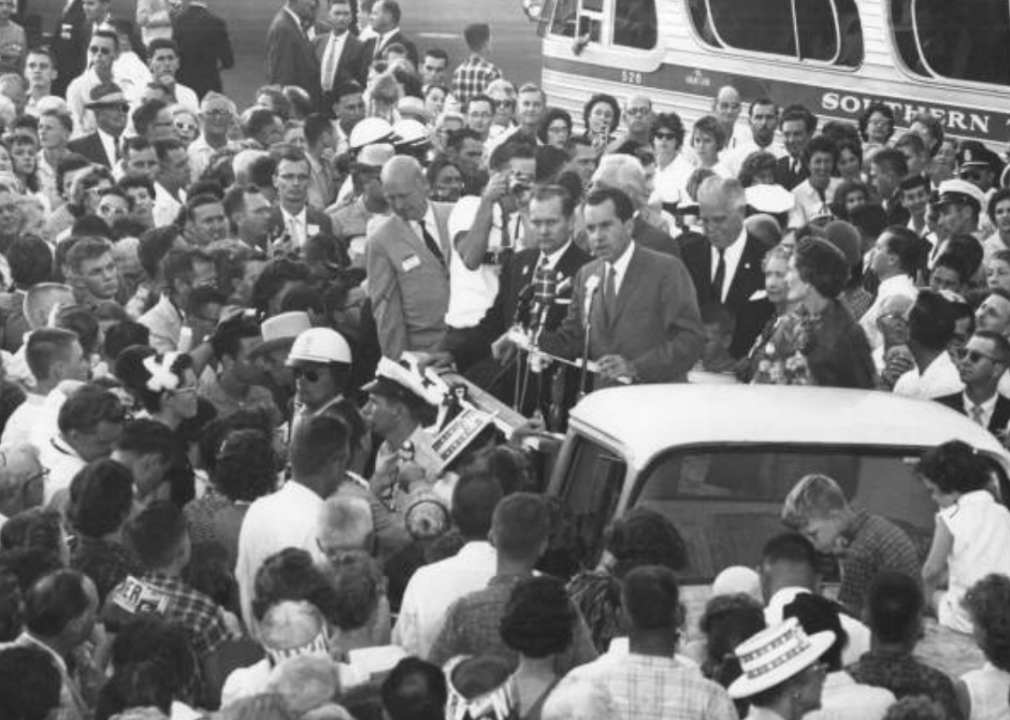
Nixon, who later became president (and had recently served as the U.S. vice president), lost the election to incumbent Pat Brown. In his concession speech, the Republican politician famously said, “You won’t have Dick Nixon to kick around anymore.”
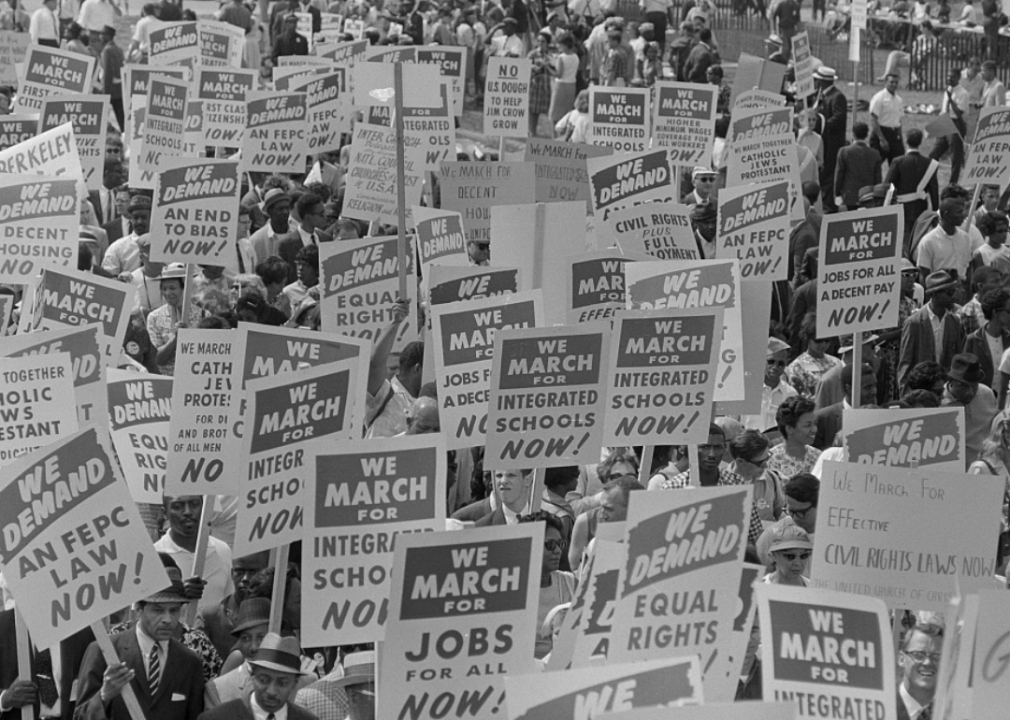
In June of 1963, GOP senators issued a statement reaffirming civil rights activism. It read, “The Republican Members of the U.S. Senate … reassert the basic principles of the party with respect to civil rights, and further affirm that the president, with the support of Congress ... must protect the rights of all U.S. citizens regardless of race, creed, color, or national origin.”
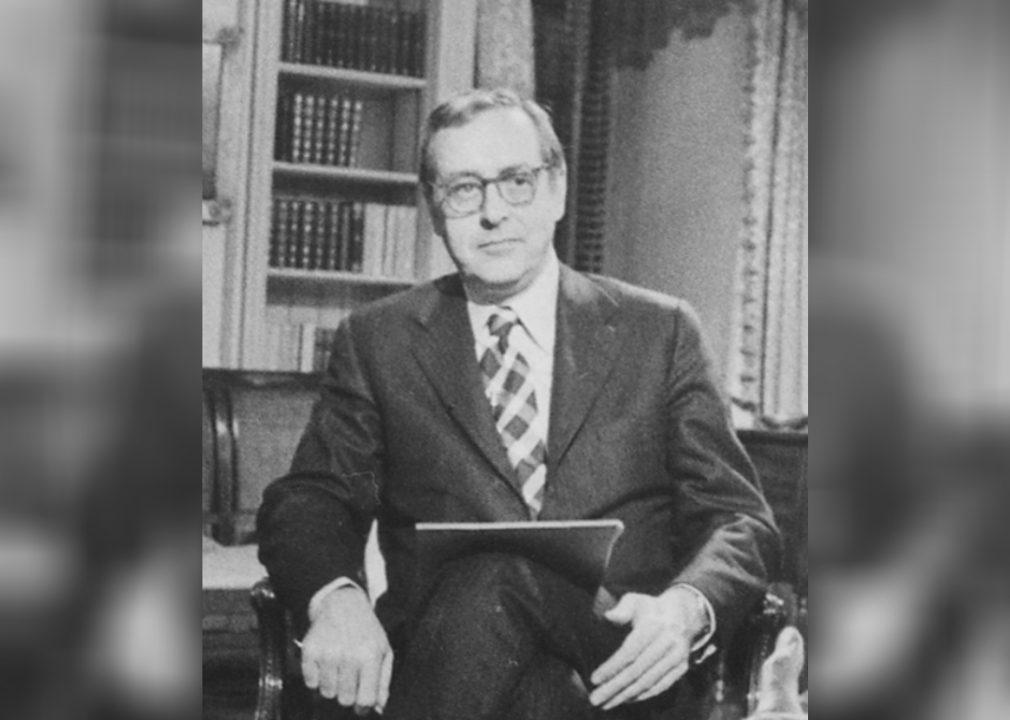
NBC reporter John Chancellor got arrested at 1964’s Republican National Convention when he refused to leave after reporters were rushed off the convention floor following Barry Goldwater’s presidential nomination. He then famously declared on television, “This is John Chancellor, somewhere in custody!”
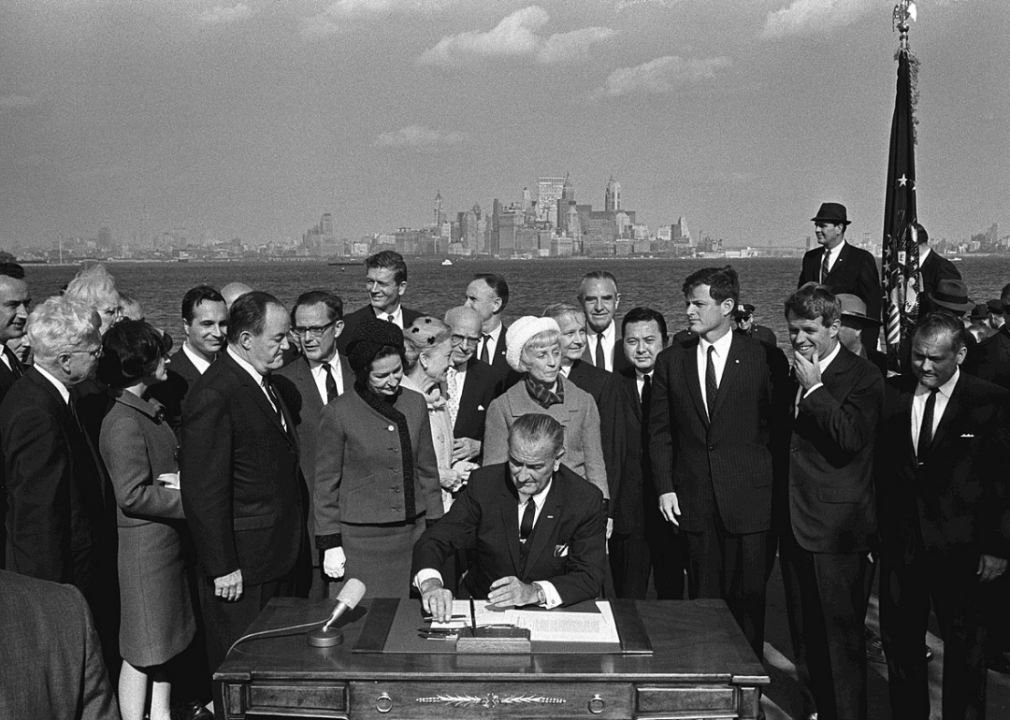
President Johnson signed this law, which abolished immigration discrimination against groups including Eastern Europeans and Asian immigrants. In 2016, Politico reported that the law “gave the Republican Party its race problem,” because the modern Republican party appeals to white Americans and white immigrants, distinguishing them from immigrants of color.
You may also like: Heart and Soul of the Republican Party
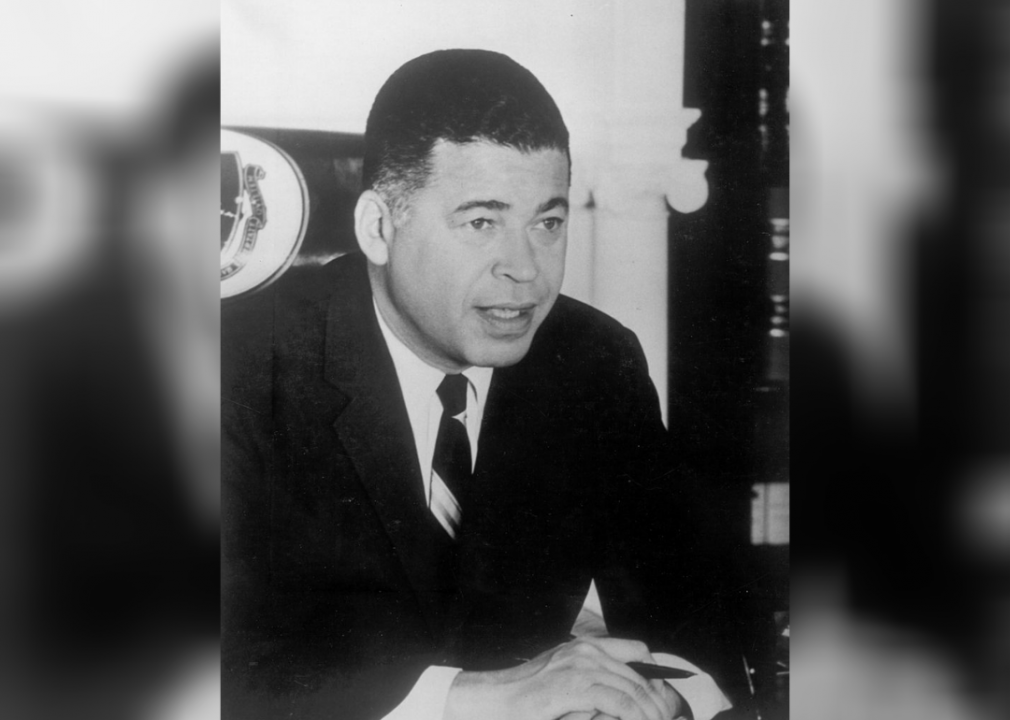
The Republican politician had recently served as an Attorney General in Massachusetts. In 1966, he became the first African American to become a popularly elected Senator since America’s Reconstruction era.
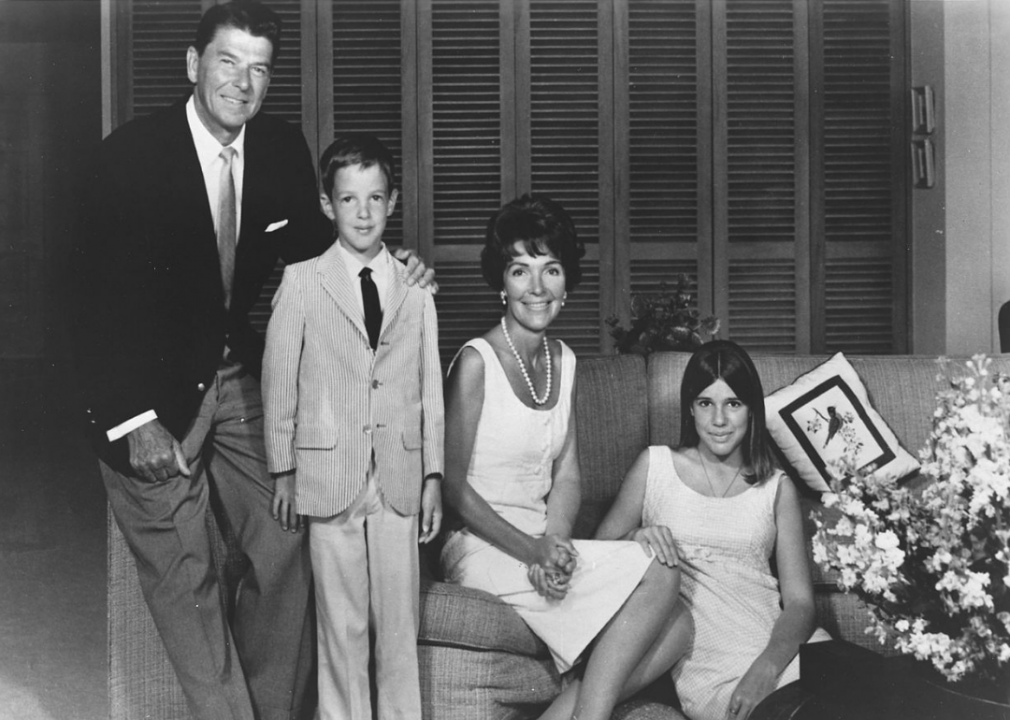
The former actor and entertainer ran on promises to “send the welfare bums back to work” and clean up anti-war student protests. He then defeated long-time Democratic governor Pat Brown, an important stepping stone towards his eventual presidency.
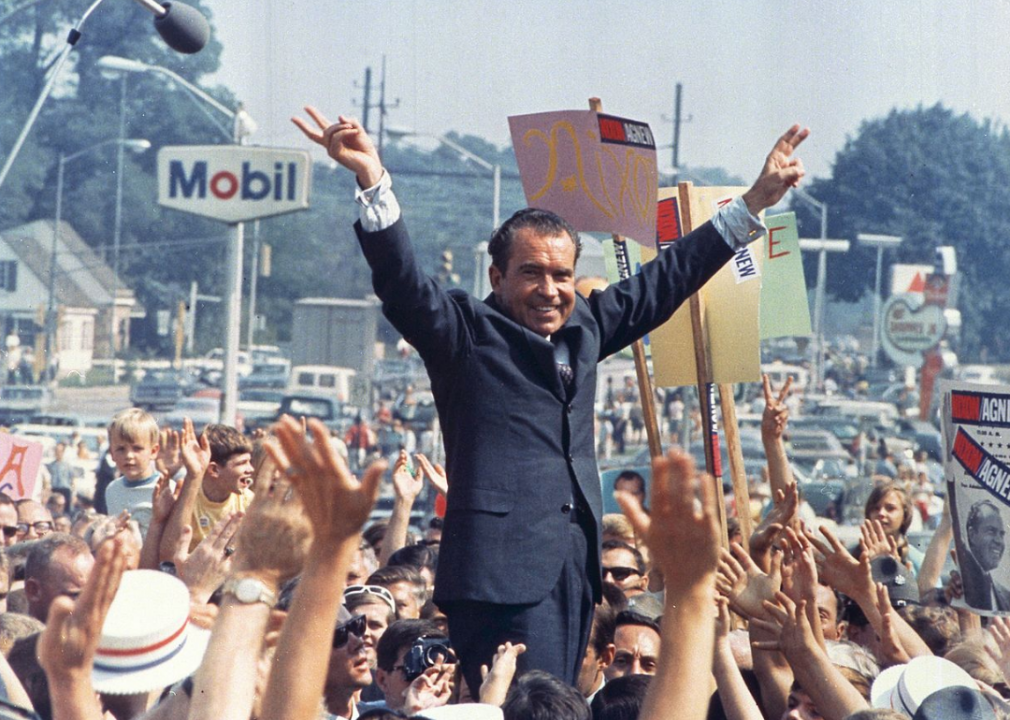
In a rare turn of events, neither the Democratic or Republican candidates received over 50% of the national popular vote, since third-party politician George Wallace was especially popular. Still, California Republican and Senator Nixon managed to defeat incumbent Democratic Vice President Hubert Humphrey.
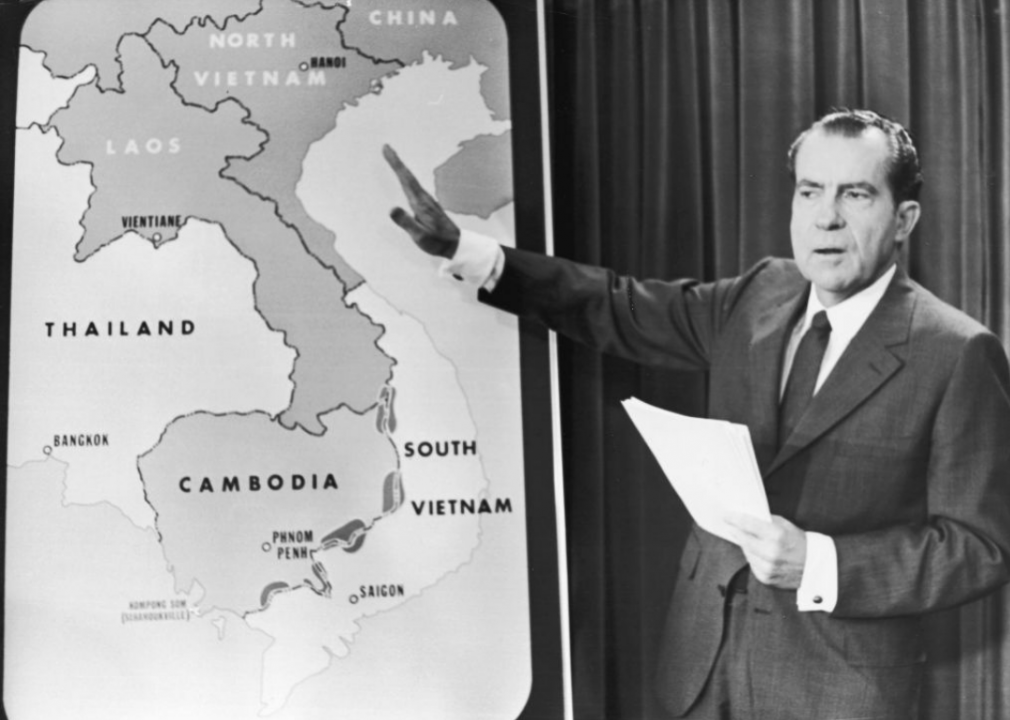
After nearly four years of U.S. involvement in the Vietnam War, newly inaugurated President Nixon announced in a Guam press conference that the U.S. would now expect its Asian allies to “bear primary responsibility to provide the manpower for [their] own defense.” However, he clarified that the U.S. would still act as a nuclear umbrella for these countries when necessary.
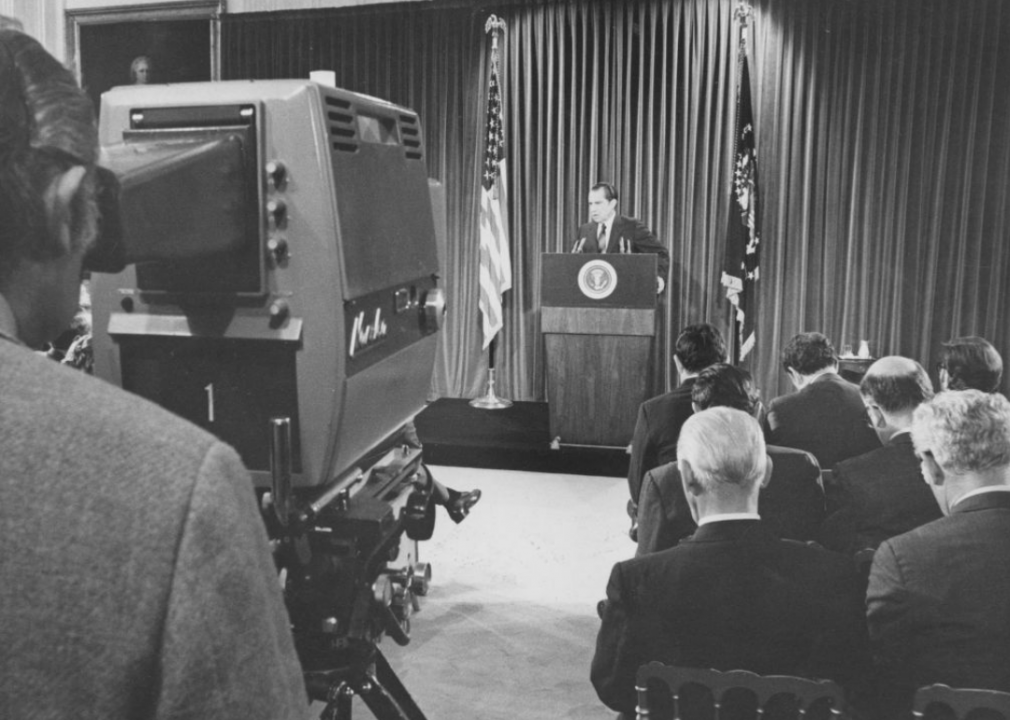
After significant anti-war protests in response to the United States’ involvement in the Vietnam War, Nixon’s deployment of American troops to Cambodia sparked even more controversy. He did this so that the military personnel could invade the Southeast Asian nation with South Vietnamese soldiers and remove Northern Vietnamese military personnel from the area.
You may also like: Heart and Soul of the Republican Party

The Nixon Shock occurred when the president introduced his New Economic Policy program to create “a new prosperity without war.” In doing so, he effectively ended the Bretton Woods system that established fixed exchange rates in the aftermath of World War II.
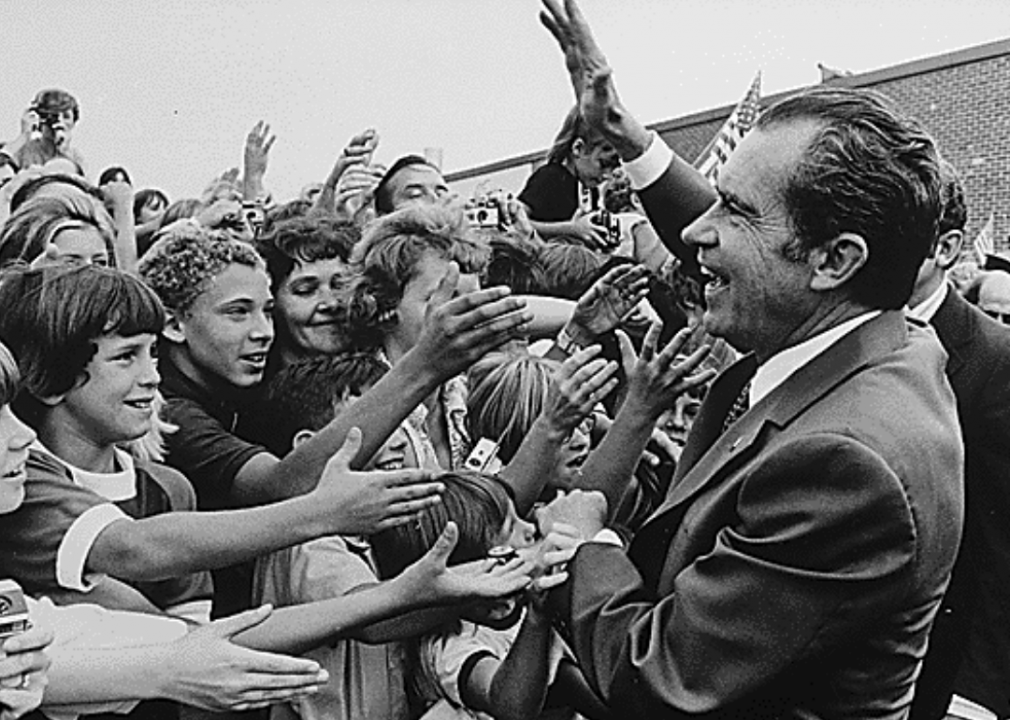
Richard Nixon’s reelection also gave him one of the most significant victories in presidential election history, since he received a 23.2% margin of victory over Democratic opponent George McGovern. Young people had a say in this landmark decision as well, since this was the first election in which 18-year-olds could vote. However, the Watergate scandal also marked the beginning of the end for Nixon when it broke that same year.
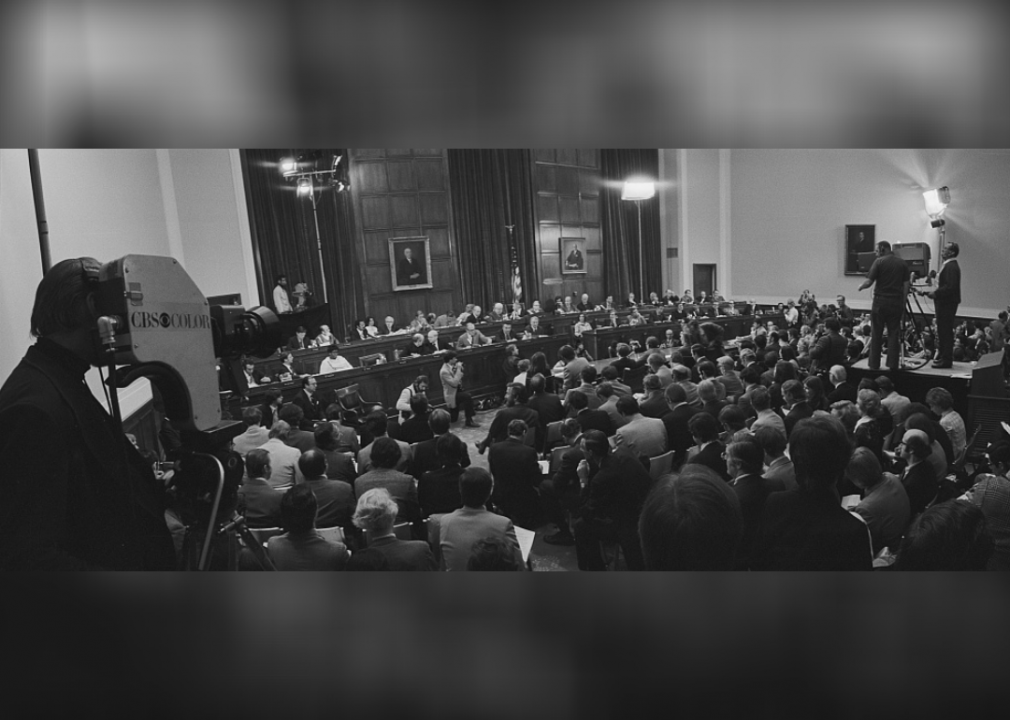
After the Watergate scandal was publicized, televised Senate hearings began, in which White House legal counsel John Dean testified that the chief White House advisors and former Attorney General approved the break-in to the Democratic National Convention headquarters. Politician Fred Thompson also was told about the secret Nixon tapes, which proved that the president had been aware of the operation.

When President Nixon resigned, he did so in response to a probable impending impeachment decision. The reason for this impending impeachment was that he played a role in concealing the 1972 Watergate scandal, in which Republican operatives broke into the Democratic National Committee headquarters.
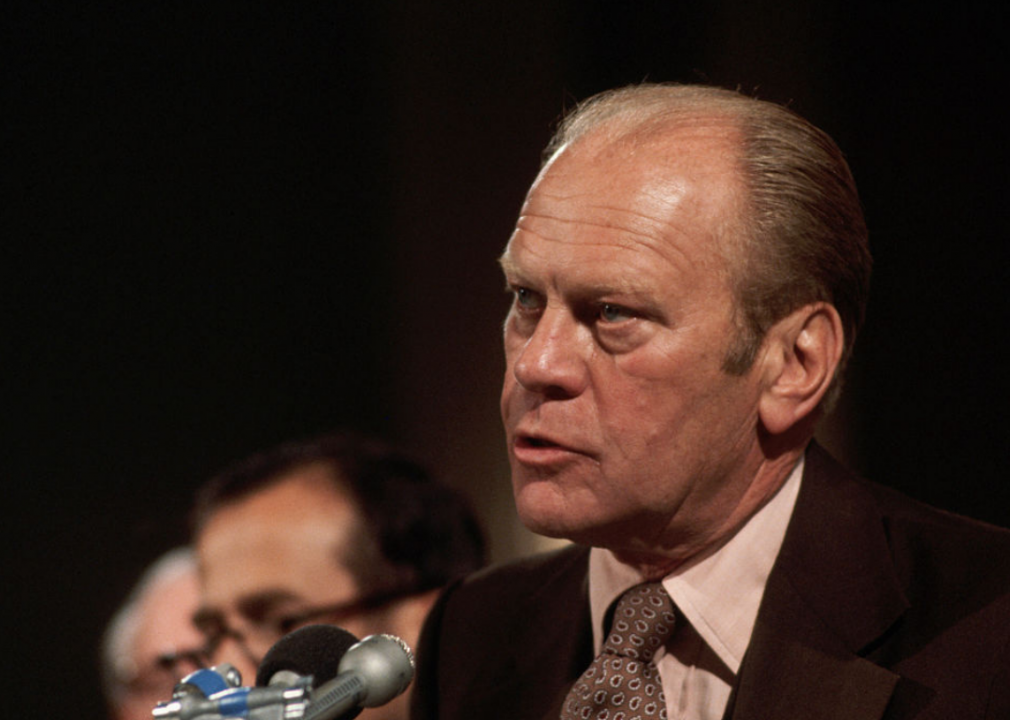
Two attempts were made on the Republican president’s life in the span of just 17 days. In the first, an assailant trained a handgun on him while he was visiting the California Capitol, and in the second, a woman aimed a gun at him as he left a San Francisco hotel.
You may also like: Heart and Soul of the Republican Party
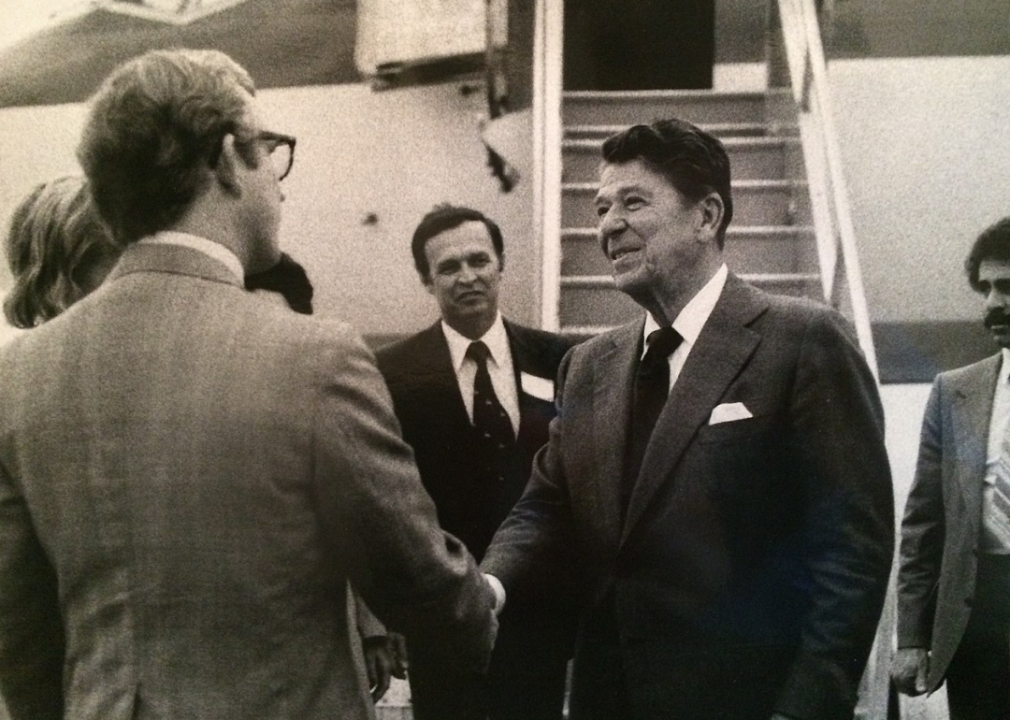
The entertainer-turned-governor conceded the Republican nomination to incumbent President Gerald Ford. However, he later accepted the same nomination in 1980.
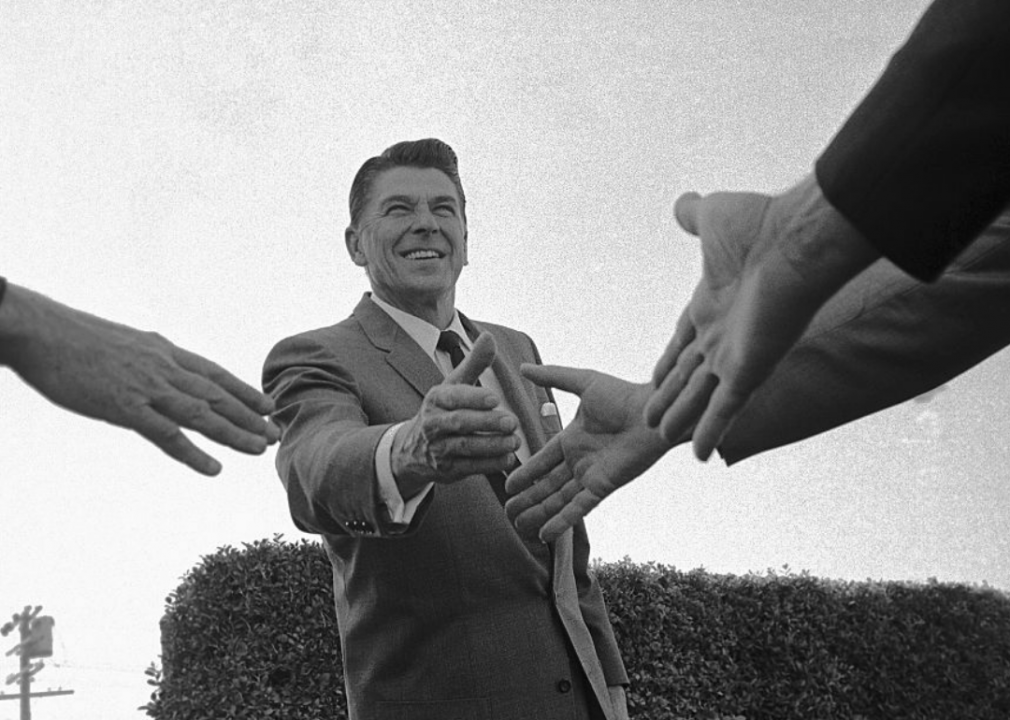
A year after conceding the Republican nomination to Ford, Reagan gave a speech in Washington calling on his fellow Republicans to “start acting to bring about the great conservative majority party we know is waiting to be created.” He emphasized that the new Republican Party should bring together people who are conservative on “social issues” like quota systems, crime, and abortion.

In the 1978 midterm elections, Republicans gained win after win in Minnesota. The wins nearly doubled the party’s ranks in the federal government, and the election night was dubbed “the Minnesota massacre.”
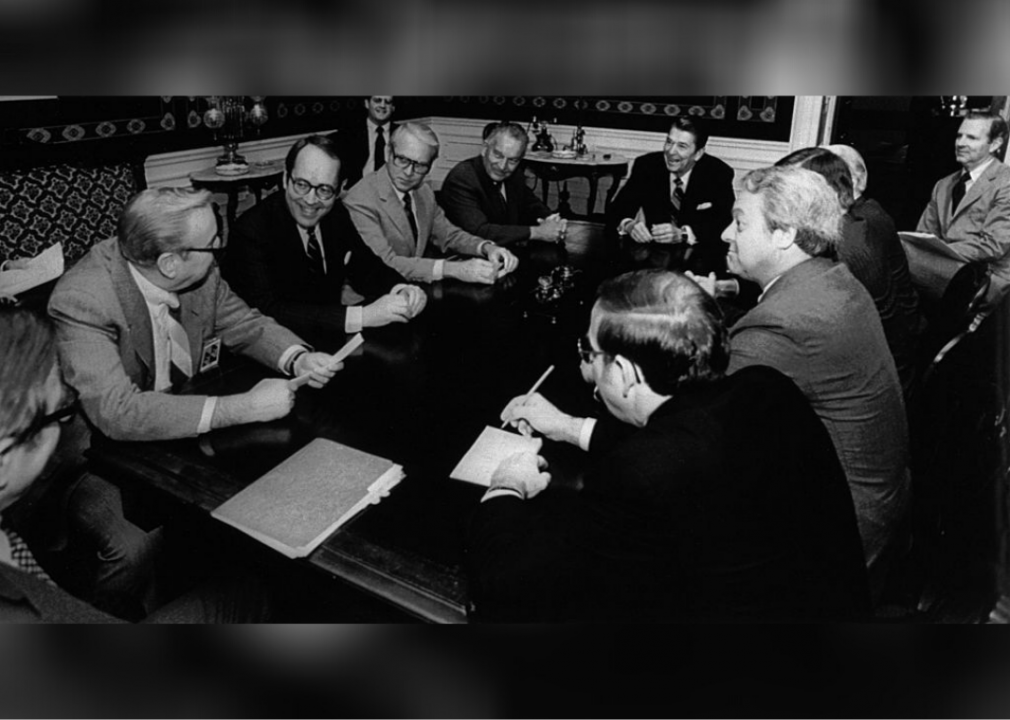
Notably, Treen’s election made him the first Republican Louisiana governor in more than a century. He served a single term in office, during which he prioritized creating a professional educational development program and cutting state income taxes.
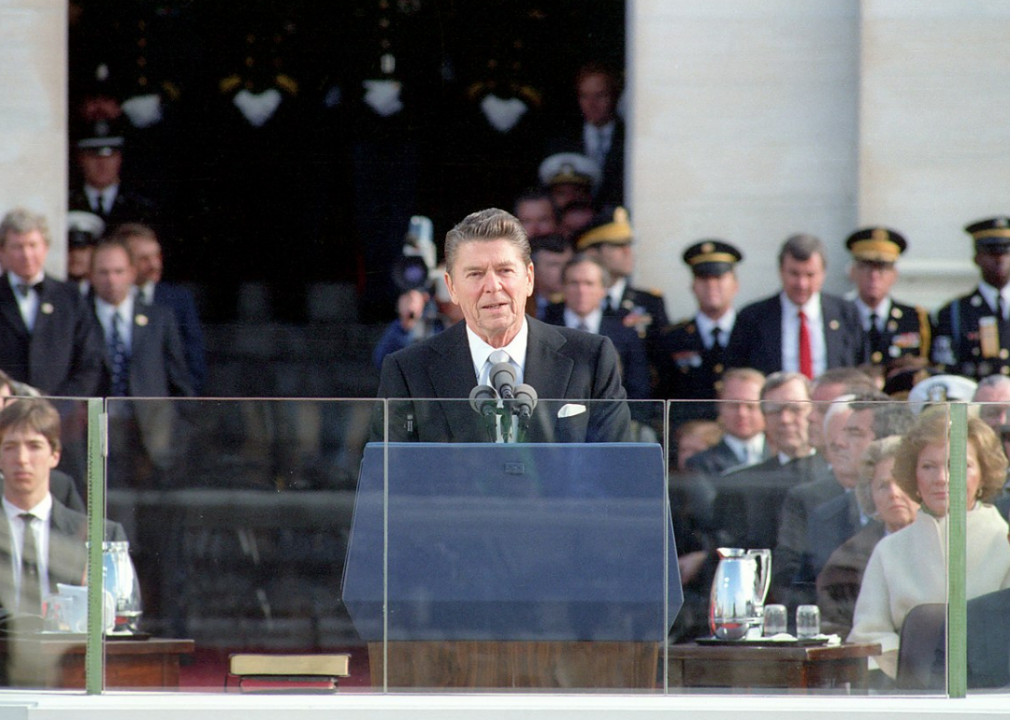
Reagan achieved a landslide victory over Democratic opponent, incumbent President Jimmy Carter. This ushered in an era of significant conservative American political power, and the new president immediately shifted to dramatically increasing federal defense spending in response to the Iranian hostage crisis.
You may also like: Heart and Soul of the Republican Party
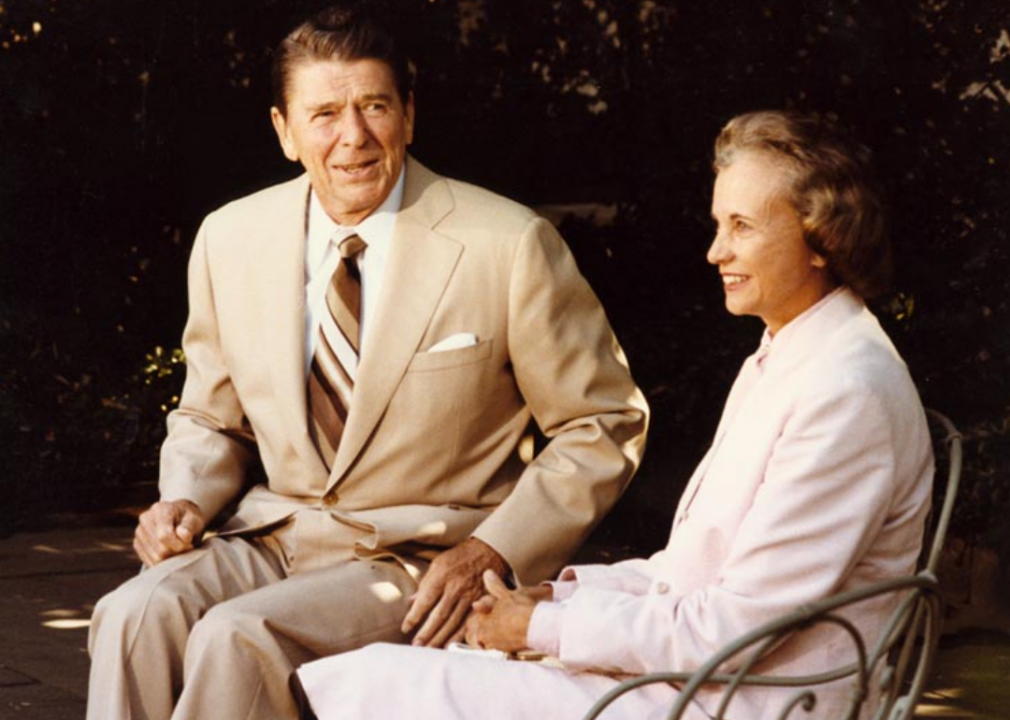
Republican Sandra Day O’Connor became the first woman appointed to the Supreme Court when she was appointed by President Reagan in 1981. She served on the court until 2006, and President Barack Obama later gave her the Presidential Medal of Freedom in 2009.
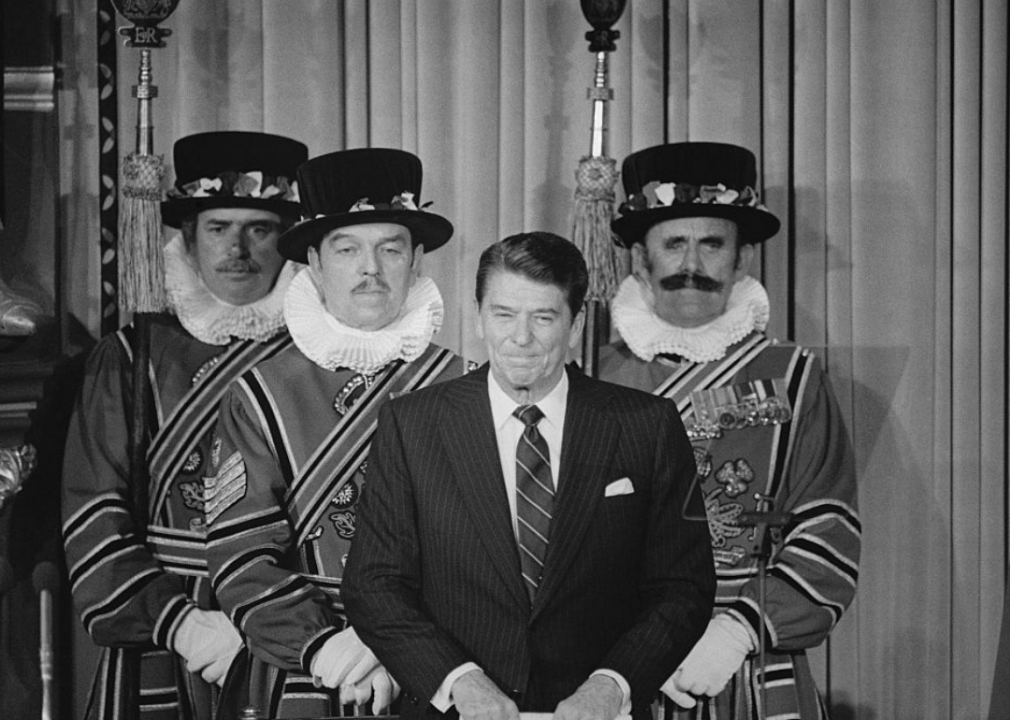
President Reagan appeared to voice his support for England amid their conflict with Argentina over the Falkland Islands. In doing so, he became the first American president to speak during a joint session of Parliament in the country.
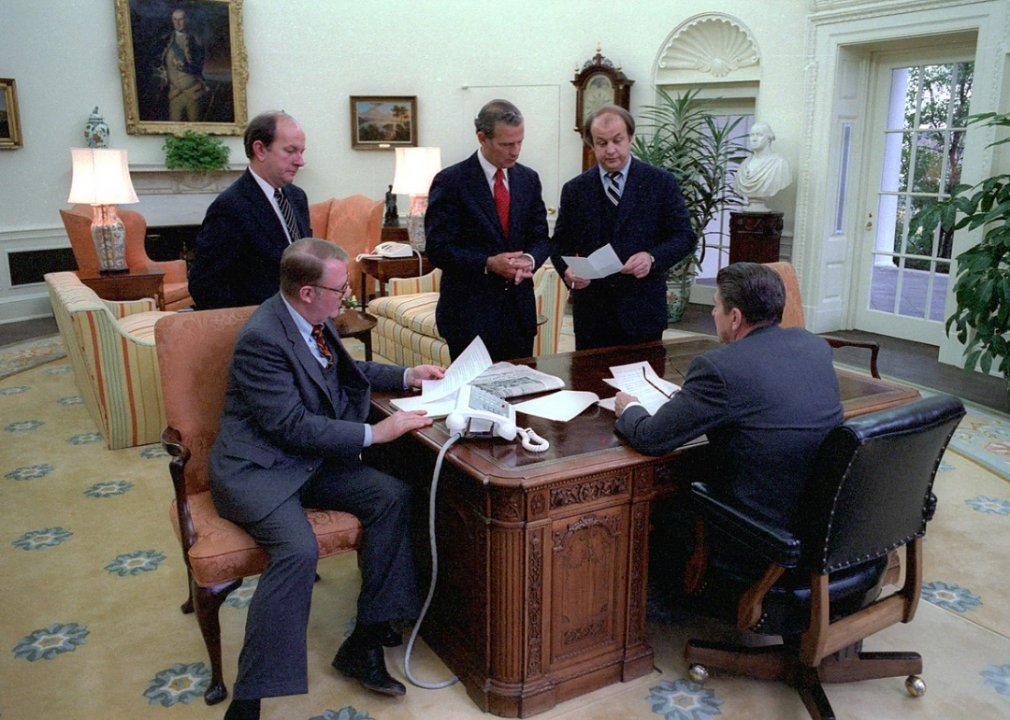
Under Reagan, the “Star Wars'' program (aka The Strategic Defense Initiative) was conceived in an attempt to create an antiballistic missile shield for the U.S. in case of a nuclear attack. By 1987, the American Physical Society determined that such technologies were years from practical application.
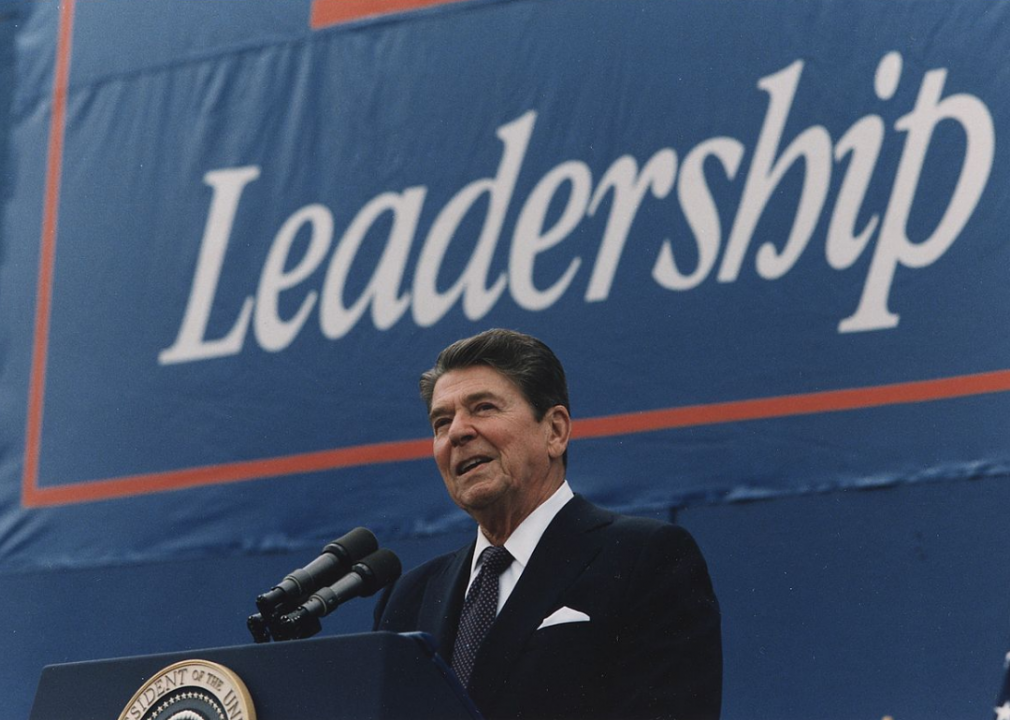
Reagan secured reelection in 1984 with the biggest landslide victory in U.S. victory: a whopping 525 electoral votes. In contrast, Democratic candidate Walter Mondale won only the state of Minnesota.
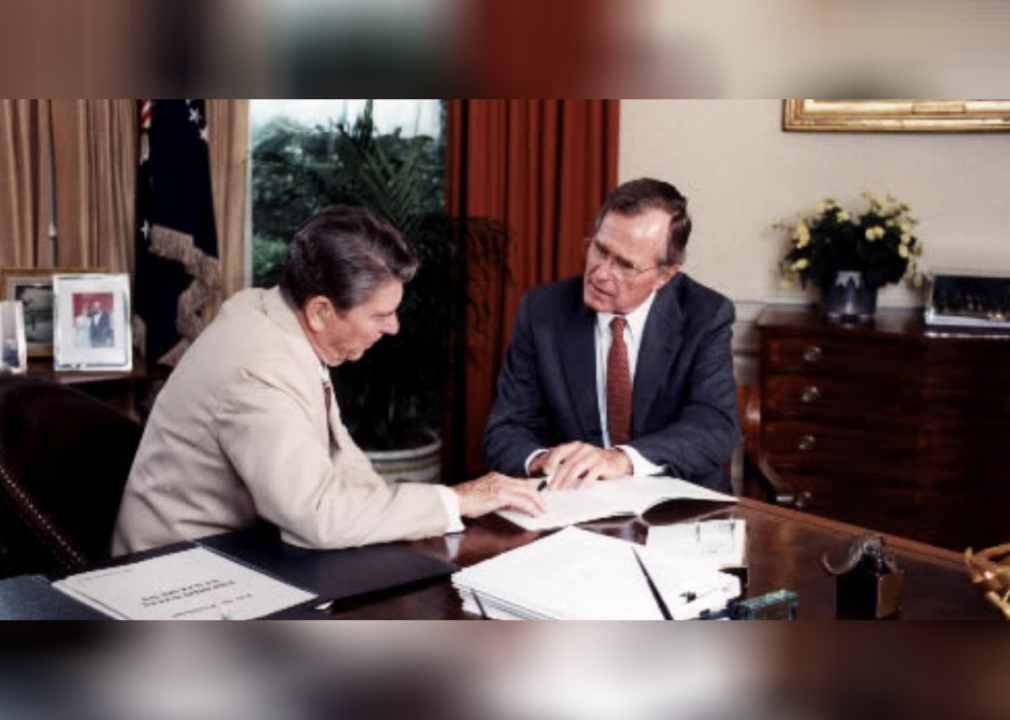
The Republican vice president briefly took over for President Reagan while Reagan had colon cancer surgery. Bush later became the 41st U.S. president in 1989.
You may also like: Heart and Soul of the Republican Party
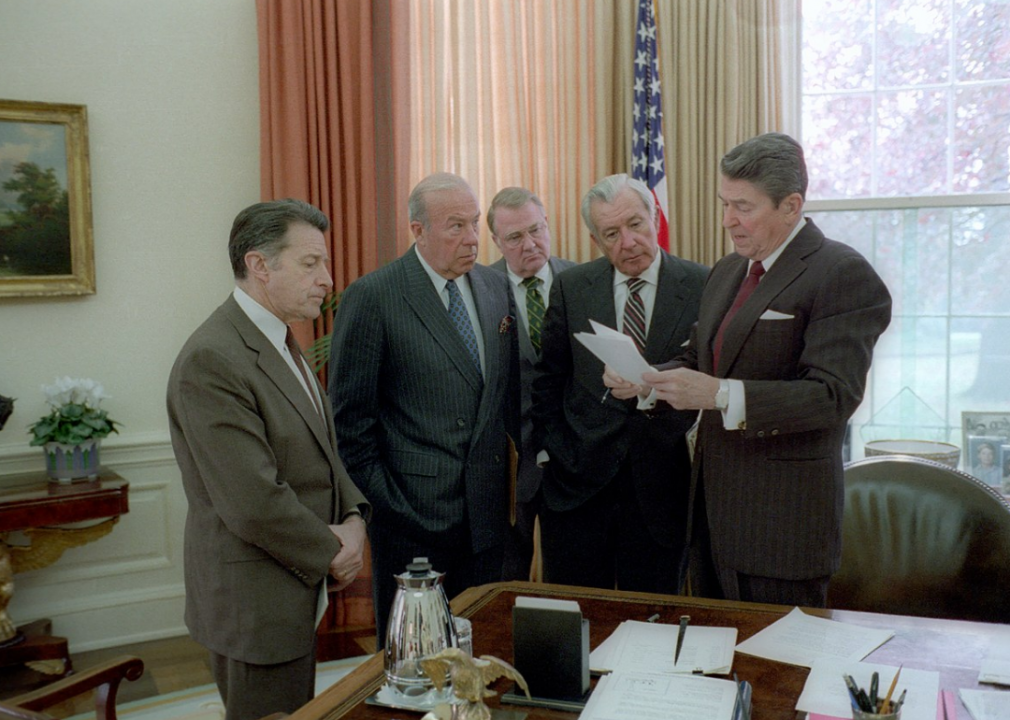
This major scandal broke during the Reagan administration’s second term, and involved the coverup of senior presidential administrators secretly selling weapons to the Islamic Republic of Iran, resulting in financial aid to the American-funded Contras in Nicaragua (Congress had ruled against providing the Contras more aid). Reagan refused to take full responsibility for the scandal until 1987.

In signing the Intermediate-Range Nuclear Forces treaty with Soviet leader Mikhail Gorbachev, Reagan took a major step towards ending Cold War conflicts between the two nations. The treaty forbade the countries from fielding a number of missiles, although President Donald Trump later withdrew the U.S. from the treaty in 2018 based on supposed Russian noncompliance.

In winning the presidency, Bush became the first sitting American vice president to be elected president since Martin Van Buren in the 1836 presidential election. The Republican nominee’s defeat of Democrat Michael Dukakis was also the most recent time in which one of the country’s political parties won three presidential elections in a row.

Though this wasn’t the first time the term was used, Bush officially aimed to take the issue of drug abuse to task by creating the Office of National Drug Control Policy (ONDCP). Although money for law enforcement was increased under the office, spending on addiction treatment made up less than a third of its budget.
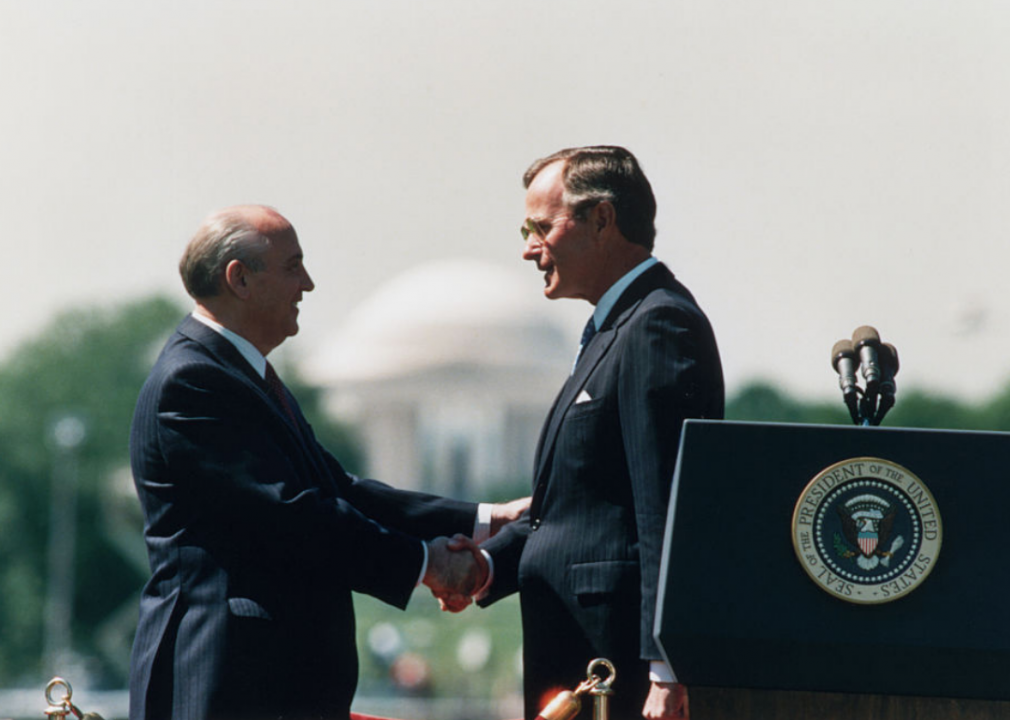
The U.S. and Soviet leaders signed another treaty in 1990, this time to stop chemical weapon production in their respective countries and eventually destroy 80% of their chemical weapons catalog. This proved to be relatively short-lived, though, since President George W. Bush ordered troops to invade Iraq in search of similar weapons in 2003.
You may also like: Heart and Soul of the Republican Party
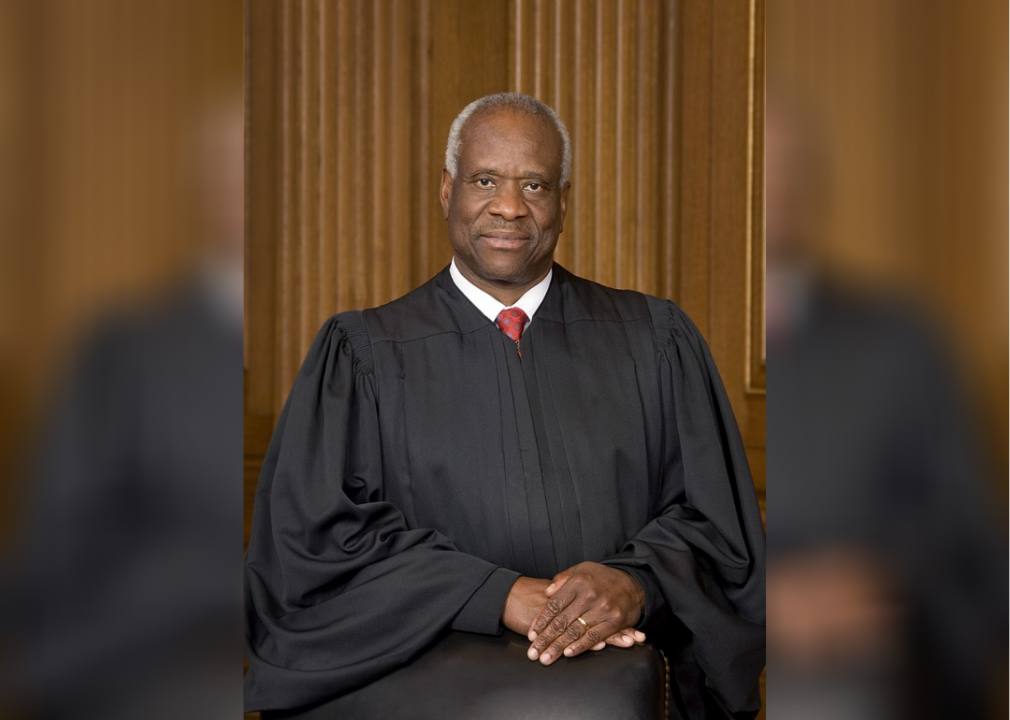
The Republican judge is currently the longest-serving Supreme Court judge currently working, and is generally regarded as one of the most conservative judges. He was appointed by President George H.W. Bush, and his confirmation process was marked by interviews with his former aide Anita Hill, who accused Thomas of sexual harassment.

In doing so, he became the first U.S. president to ever speak during an Australian Parliament session. He joked about the recent removal of Prime Minister Bob Hawke, saying, “I see this rough tumble that goes like this, and I thank God for the presidential system at home.”

The Kuwaiti government allegedly found an Iraqi assassination plan that targeted ex-president George H.W. Bush during his visit there. Later, two Iraqi individuals confessed to driving a car bomb into the country during that same time.
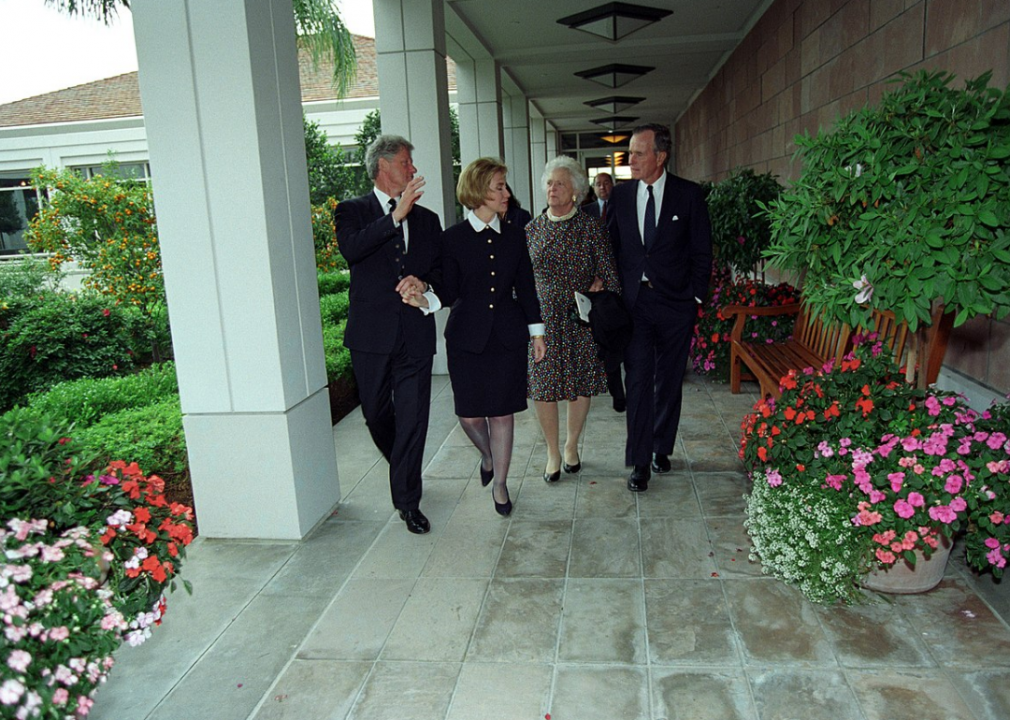
In repudiation of Democratic President Bill Clinton’s policies, Republicans gained majorities in both bodies of Congress during the 1994 midterm elections. This was the first time that the party had done so since 1952.

With the first Republican majority in both chambers of Congress in decades, Congressional Republicans set to work enacting conservative legislation that often flew in the face of Democratic President Clinton. Much of that was listed in the Contract With America, a legislative agenda that many party members had advocated for during their 1994 Congressional campaigns.
You may also like: Heart and Soul of the Republican Party

He and his running mate, Jack Kemp, were officially nominated at the San Diego Republican National Convention. However, he ultimately lost to Democratic candidate Bill Clinton.
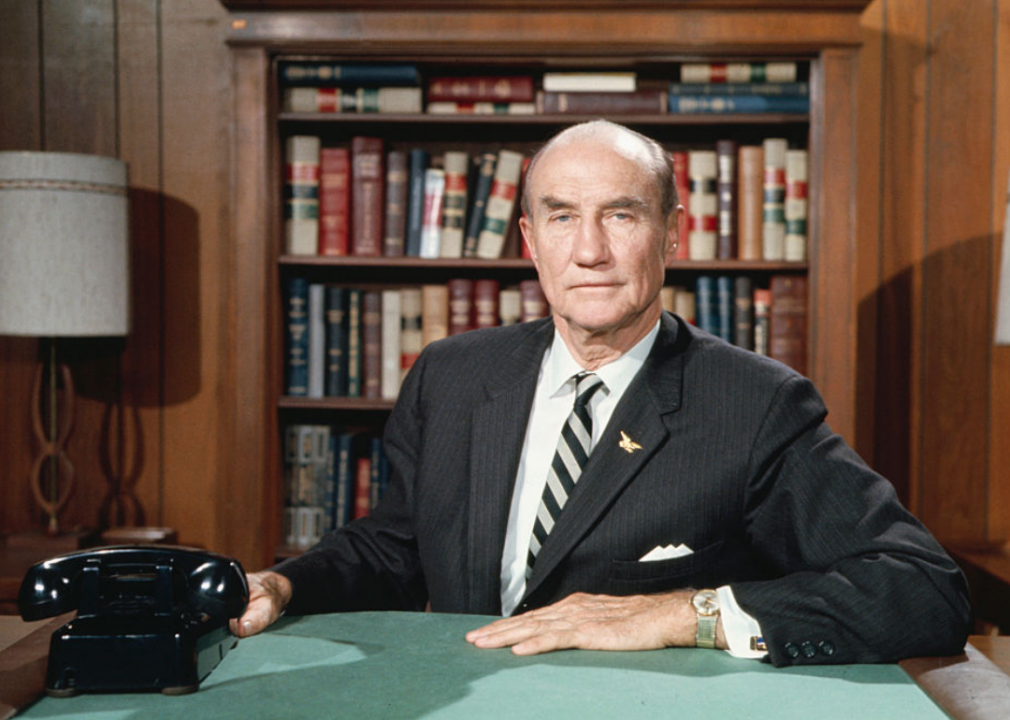
The South Carolina senator surpassed the previous record of 41 years and 10 months in May 1997, a record later broken by politicians Daniel Inouye and Robert Byrd. However, his record as the longest-serving Republican senator in American history still stands.
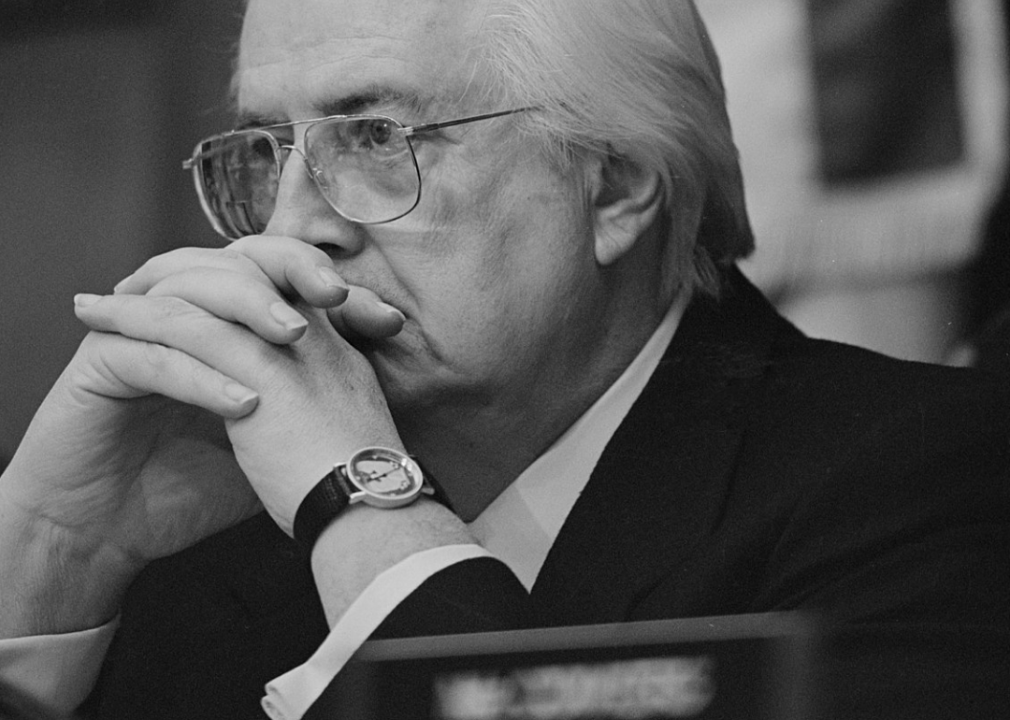
Republican House Judiciary Committee chairman Henry Hyde oversaw Clinton’s impeachment process following the Monica Lewinsky scandal, sending him 81 questions about his involvement with Lewinsky. Clinton was later impeached in early 1999.
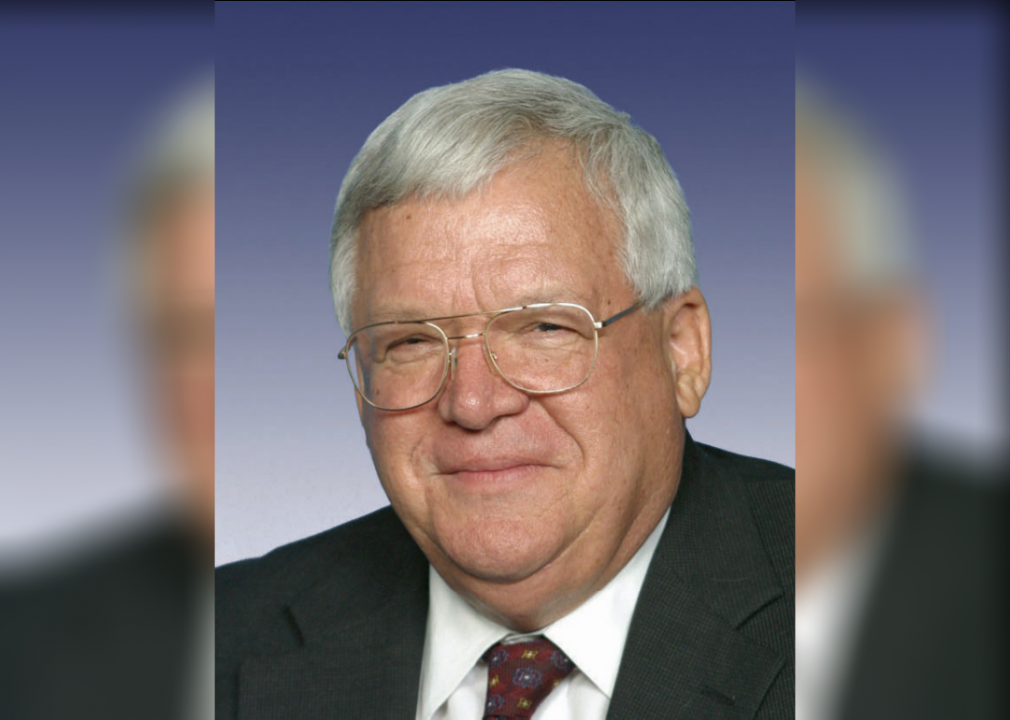
Hastert served as the U.S. House of Representatives’ 51st Speaker from 1999 to 2007, making him the longest-serving Republican to ever hold that role. More recently, he became one of the most high-profile politicians to serve a prison sentence, when he admitted past sexual abuse of students and was convicted of financial crimes relating to child molestation cover-ups in 2015.
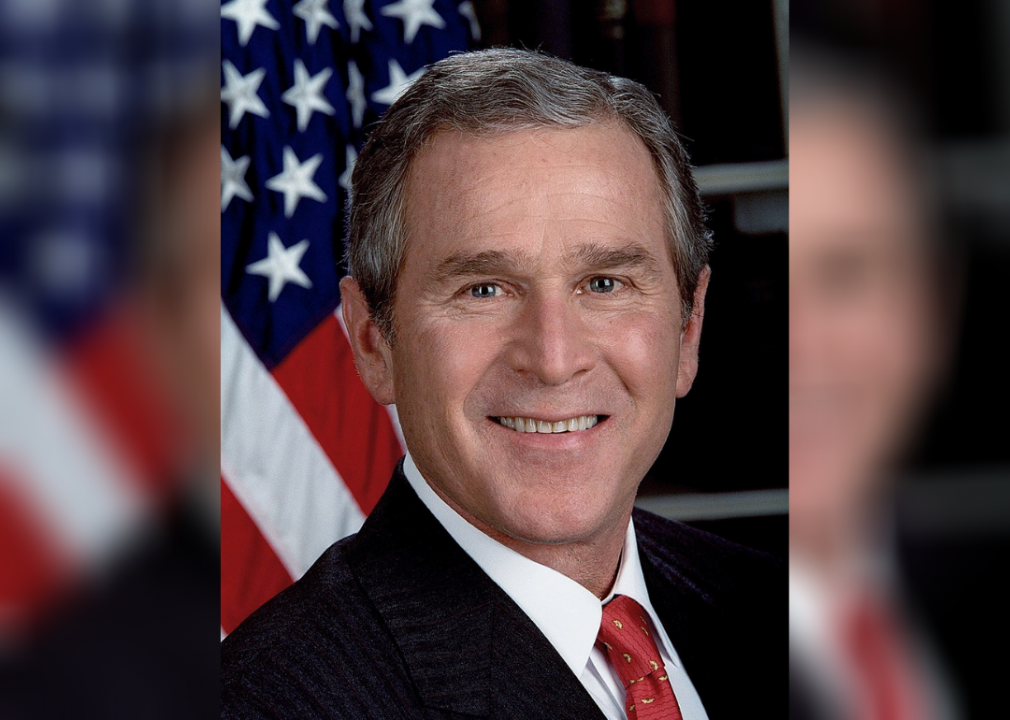
The 2000 presidential election was a long and bitter process, since a particularly close Florida race meant that determining the winner took weeks. However, the Supreme Court ultimately named Republican nominee George W. Bush the winner, making him the 43rd president after his father, George H.W. Bush, previously served as the 41st president.
You may also like: Heart and Soul of the Republican Party
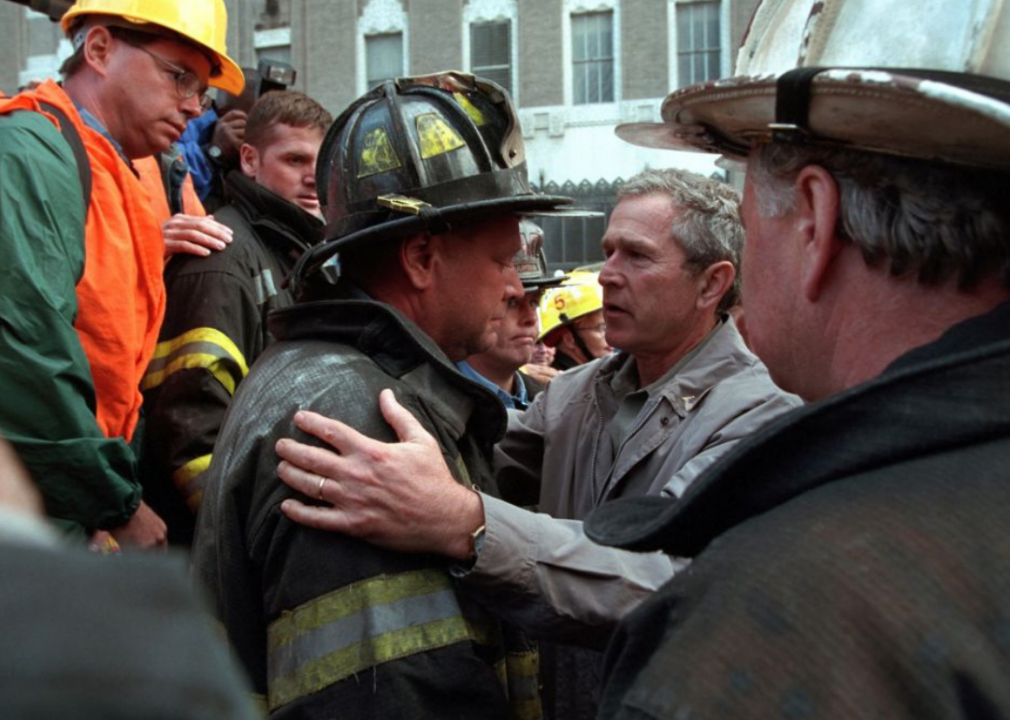
In the aftermath of 9/11, the president signed legislation authorizing the use of federal forces against the terrorist group ISIS. It has since led to military deployment in countries like Afghanistan, Yemen, the Philippines, and Ethiopia.
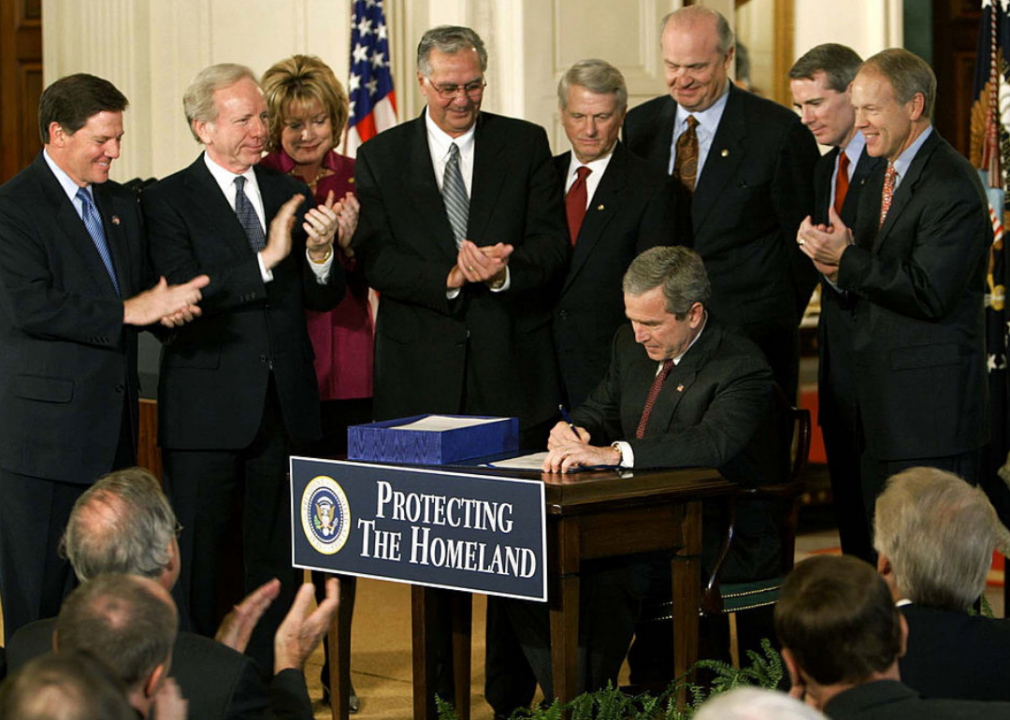
Following the 9/11 terrorist attacks, Republican president Bush and Congress passed the Homeland Security Act, which made sweeping, dramatic changes to national security. It introduced the biggest changes to federal security measures since the Department of Defense was originally established in 1947.

The president teamed up with U.S. allies like Australia and the U.K. and began aggressively bombing Iraq through the “Shock and Awe” bombing campaign. Their mission was to find and destroy Iraq’s alleged weapons of mass destruction, but no such weapons were ever found.
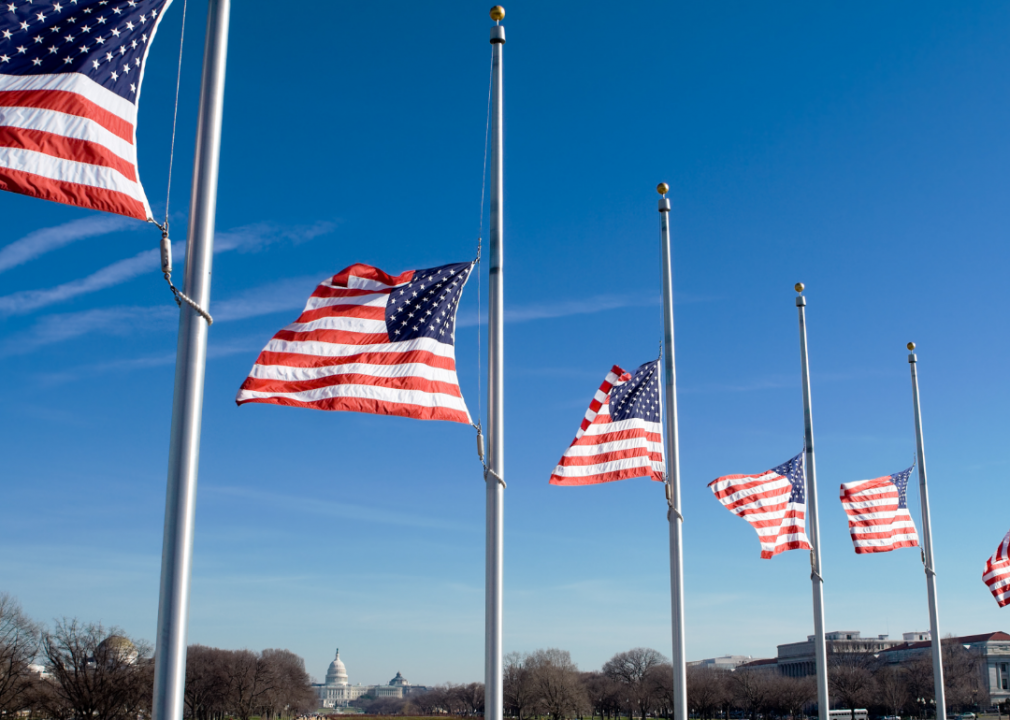
The Republican president, who passed away due to Alzheimer’s-related complications, left behind a staggering conservative legacy, such as his “Reaganomics” economic policies and “anti-communist” work. One economist argues that Reagan’s actions are responsible for a current crisis that started with “slashing taxes on the rich, dismantling regulations, cutting back on public programs and turning many of the nation's problems back to the states.”
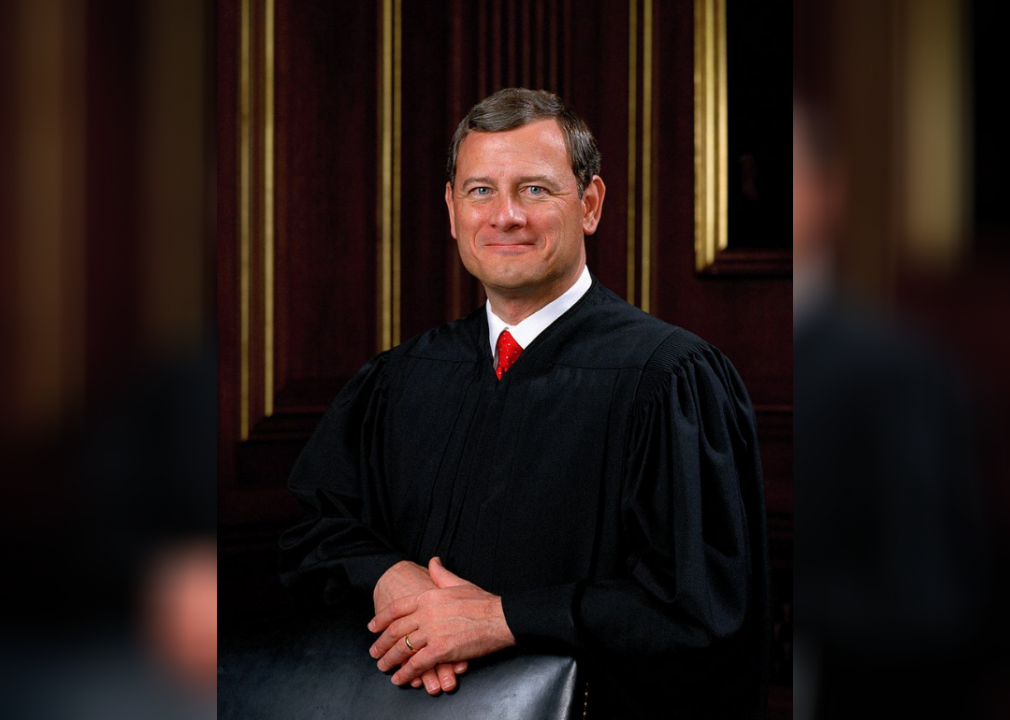
The current Chief Justice of the Supreme Court was nominated by President George W. Bush, and previously worked in roles like Associate Counsel to the President and Principal Deputy Solicitor General. He presided over major court cases like Shelby County v. Holder and King v. Burwell, and oversaw President Trump’s first impeachment trial. (Roberts declined to preside at the second one).
You may also like: Heart and Soul of the Republican Party
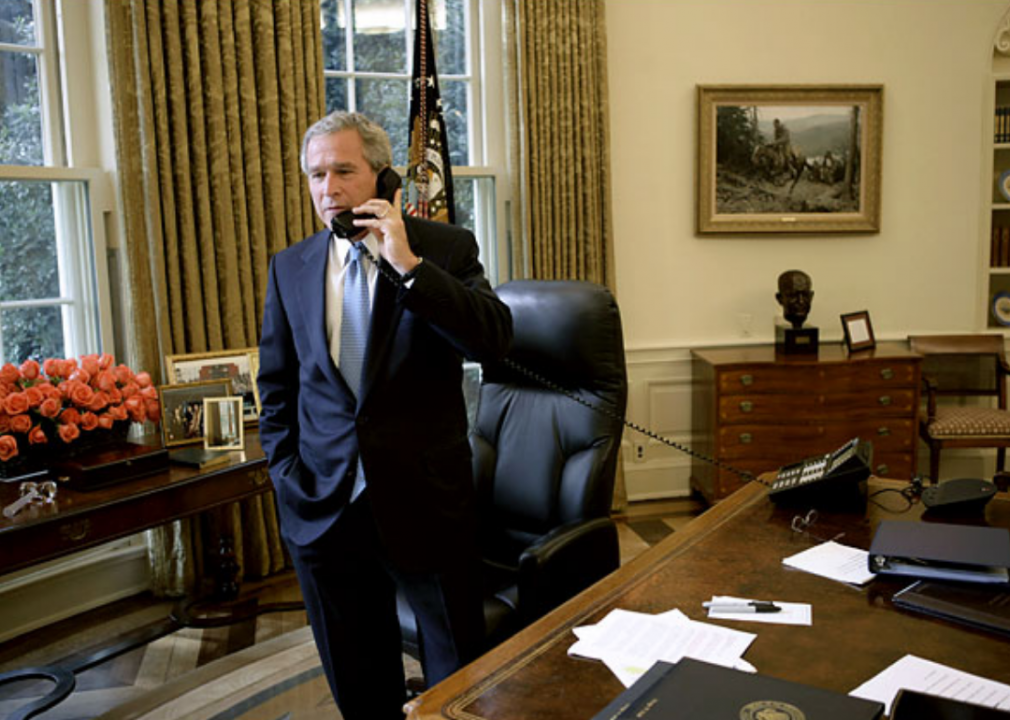
The administration suggested spending $114 million on educational programs covering languages not ordinarily taught in American public schools. Some of these languages included Arabic, Persian, and Chinese.
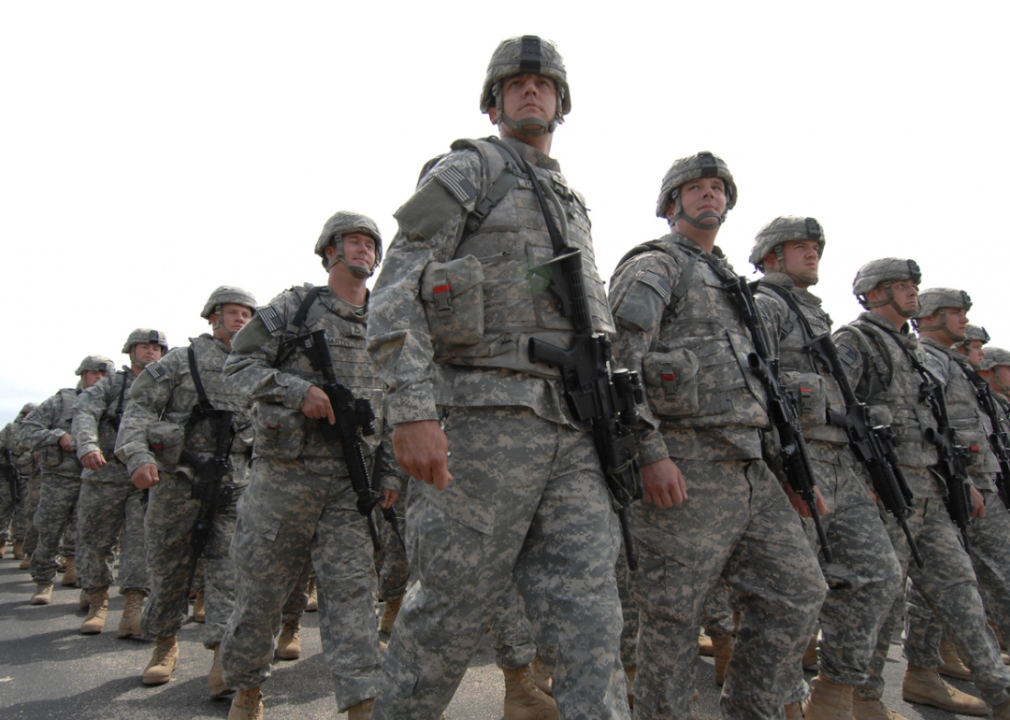
Announced during a presidential speech under the title “The New Way Forward,” the surge resulted in Bush sending an additional 20,000 soldiers to the war in Iraq. “Our troops have a well-defined mission: to help Iraqis clear and secure neighborhoods [...] And to help ensure that the Iraqi forces left behind are capable of providing the security that Baghdad needs,” he said.
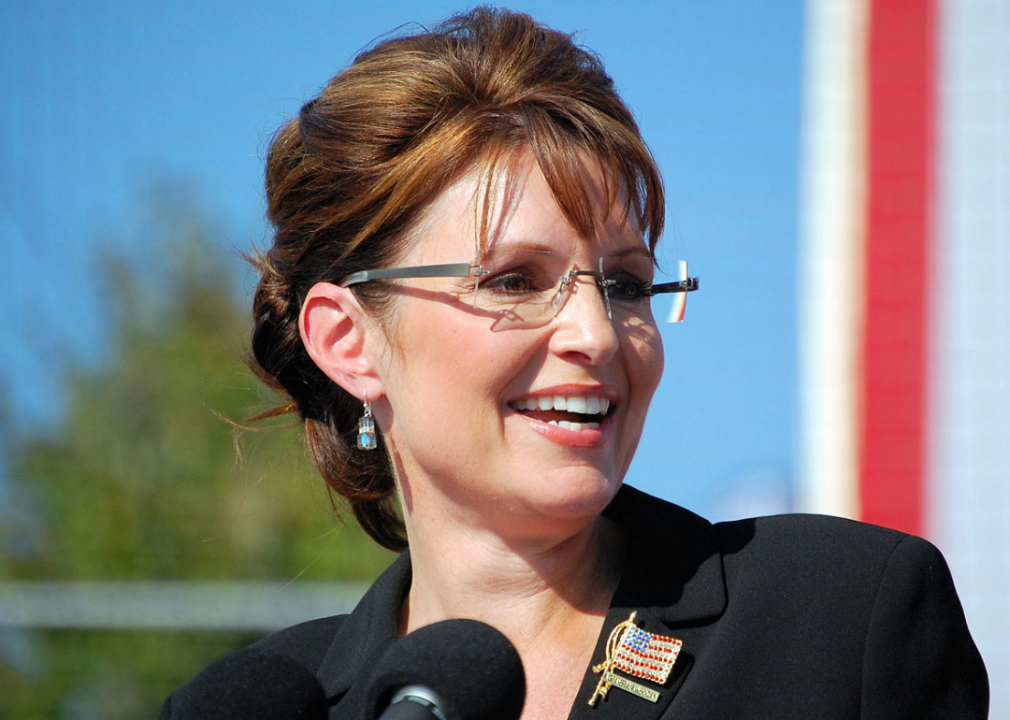
When she became Republican presidential candidate John McCain’s running mate, Palin also became the first woman to ever become a Republican vice presidential nominee. However, the pair ultimately lost to Democratic nominee Barack Obama and his running mate Joe Biden.
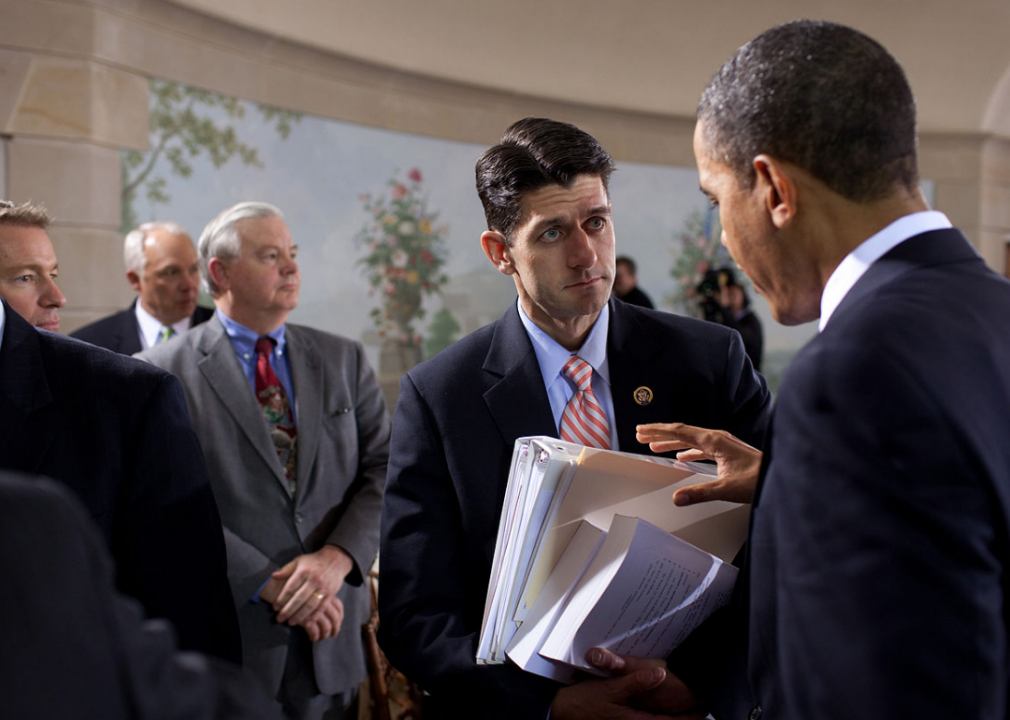
The year 2009 was marked by party disputes over a sweeping healthcare reform bill, which cost $1.2 trillion dollars and required that employers offer health insurance. Republicans emerged in staunch opposition, with Wisconsin’s Rep. Paul Ryan stating, “This is perhaps the worst bill I have seen come to the floor in my 11 years of Congress.”
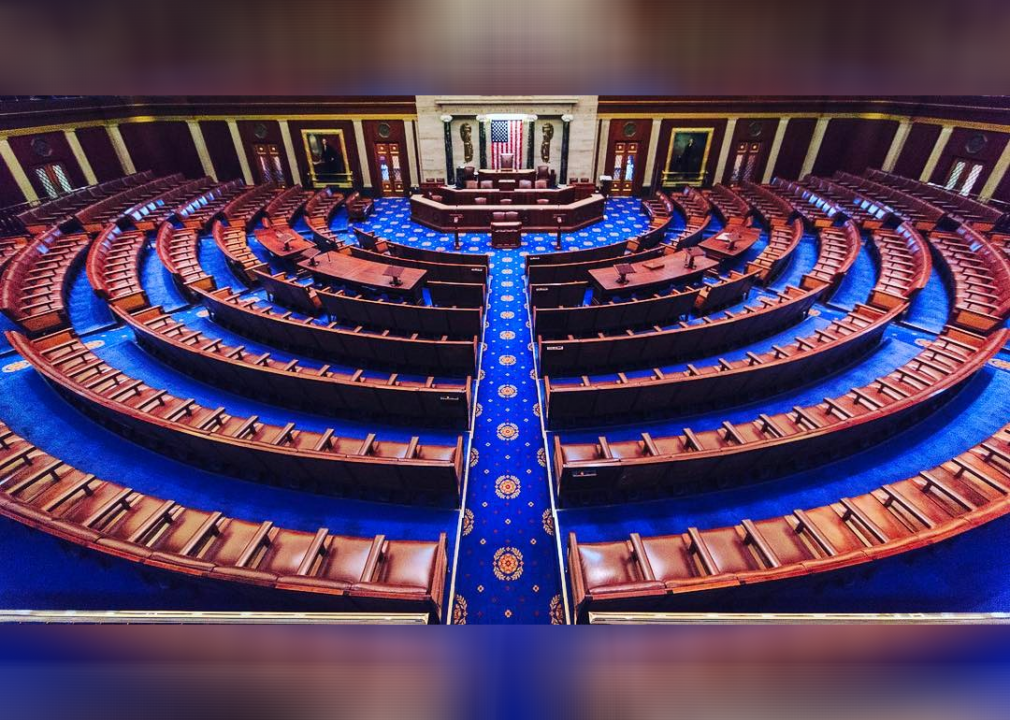
The party’s overwhelmingly successful campaign strategy focused on promises to combat many of President Obama’s recent policies, particularly his proposed regulation of Wall Street. Though Republicans only needed to unseat 39 Democrats to take back the House, they won a landslide victory of over 60 spots.
You may also like: Heart and Soul of the Republican Party
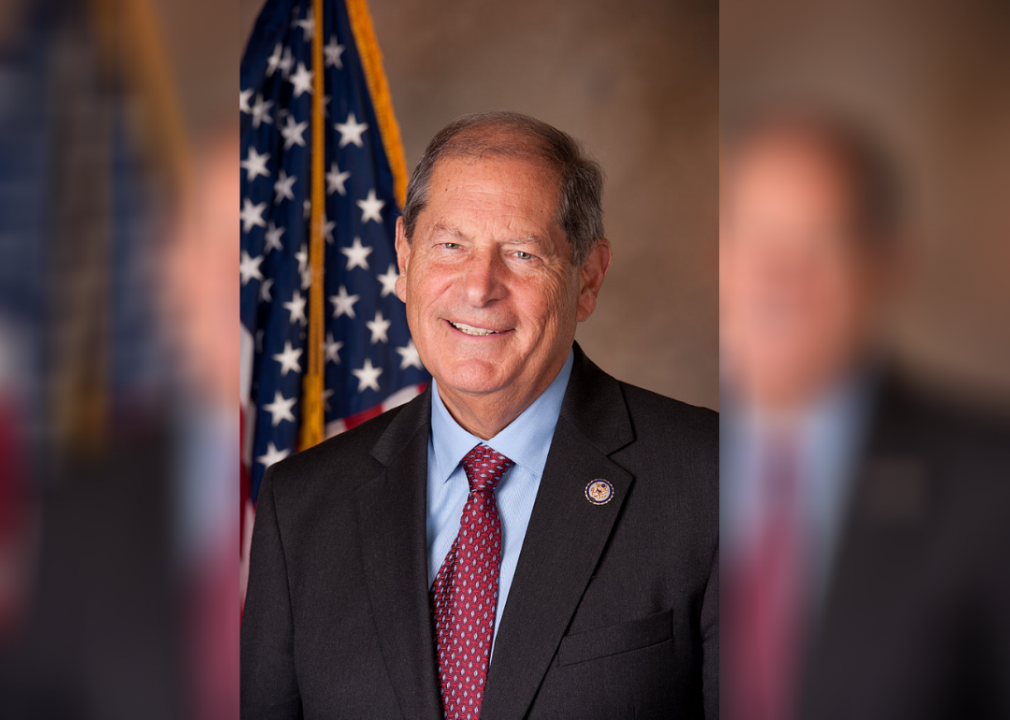
In a blow to Congressional Democrats, the Republican politician won the seat for New York’s ninth Congressional district in a special election held after Anthony Weiner resigned. Notably, he was the first Republican representative for the district in 88 years.

The Republican Senator picked Paul Ryan as his running mate, and preelection debates focused heavily on the candidates’ differing views on how to address the Great Recession and lingering foreign policy issues. However, Obama ultimately achieved reelection, with 332 electoral votes.

Over the course of the year, numerous Republican politicians gave lengthy filibusters in protest of policies put forth by President Obama and Congressional Democrats. Rand Paul delivered an almost 13-hour filibuster questioning the White House’s international use of drones, while Ted Cruz gave a lengthy 21-hour address calling for the defunding of the Affordable Care Act.
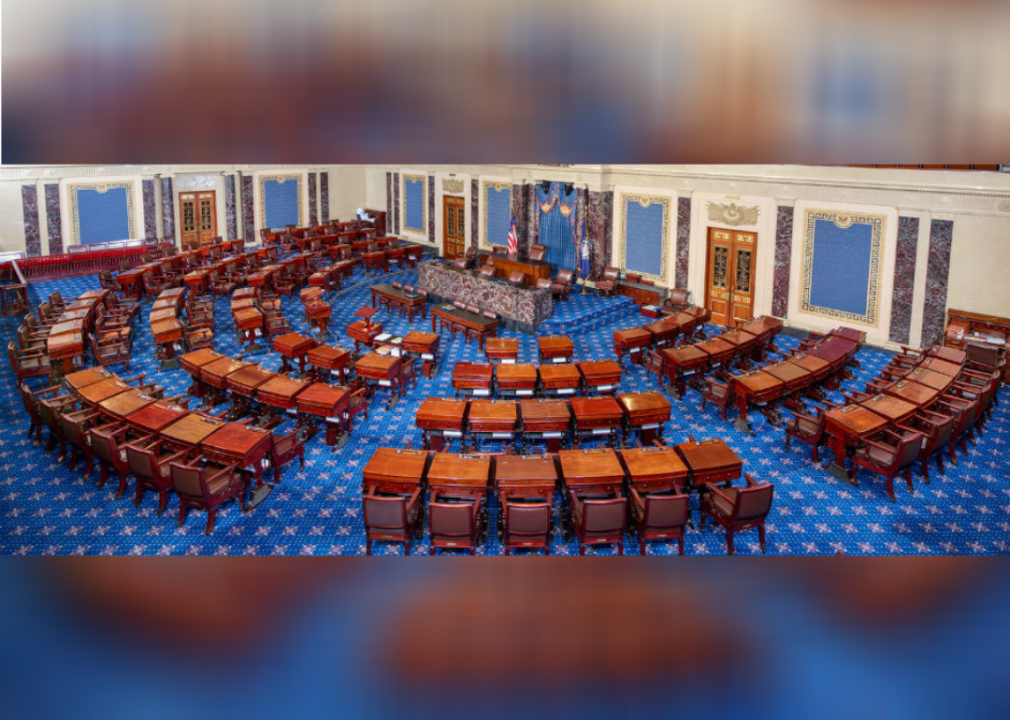
Republicans won the Senate majority in the midterm elections, a majority that they held in the 2016, 2018, and 2020 elections. They also gained 13 House seats, creating a substantial party majority in Congress as a whole.
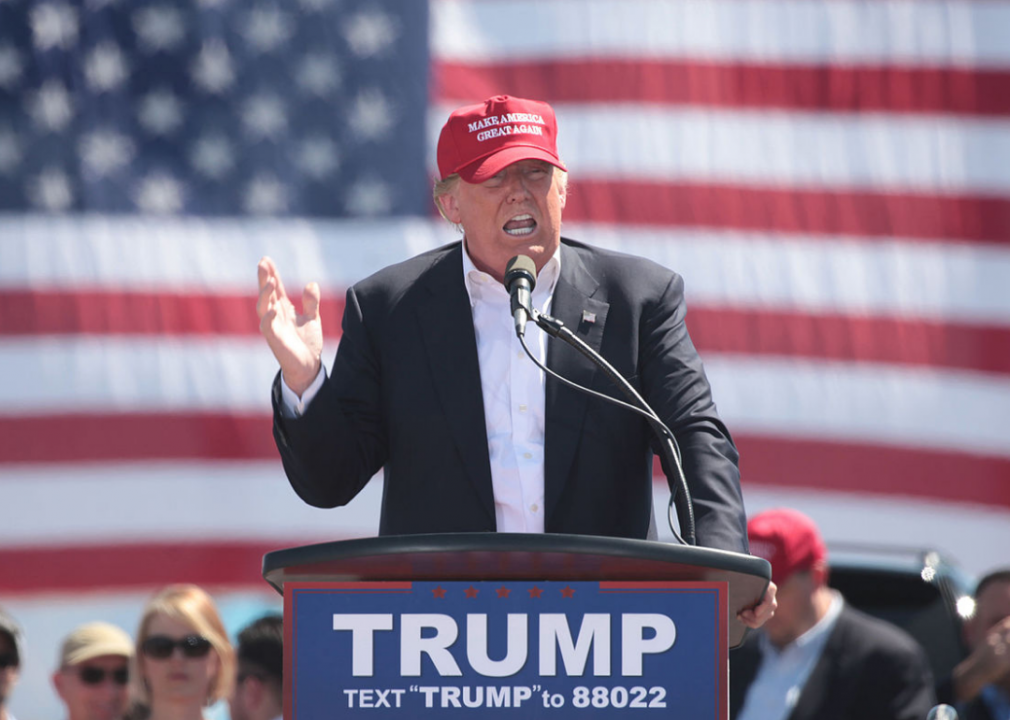
The controversial 52nd president first announced his presidential run in 2015, quickly rising to the top of Republican primary polls soon afterwards. He soon drew plenty of fire for calling Mexican immigrants rapists, calling Hillary Clinton’s debate bathroom break “disgusting,” calling for a Muslim ban, and more.
You may also like: Heart and Soul of the Republican Party
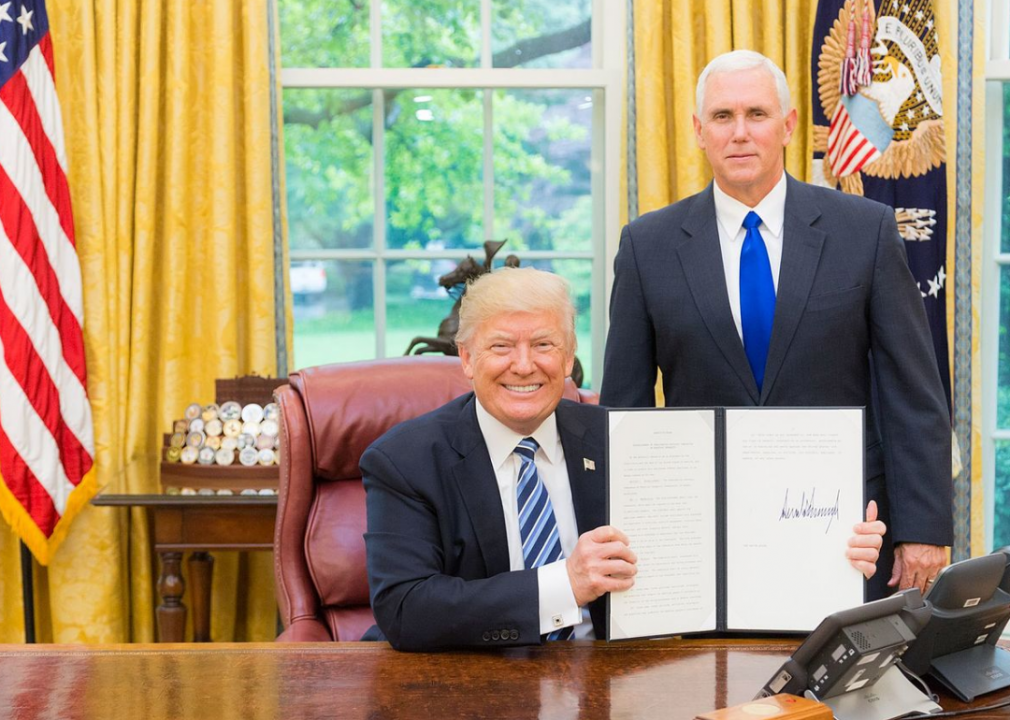
Although Democratic nominee Hillary Clinton secured the 2016 popular vote by a margin of almost 3 million ballots, Republican candidate Donald Trump won the electoral college and the presidency with 304 electoral votes. This made the 2016 presidential election the fifth U.S. election in which the winner lost the popular vote.

In 2017, Trump announced that the U.S. would withdraw from the historic Paris Agreement, which was adopted by 195 nations in 2015 to combat climate change. However, under agreement regulations, there was a three-year delay, and the United States officially became the first country to withdraw from the agreement in late 2020.
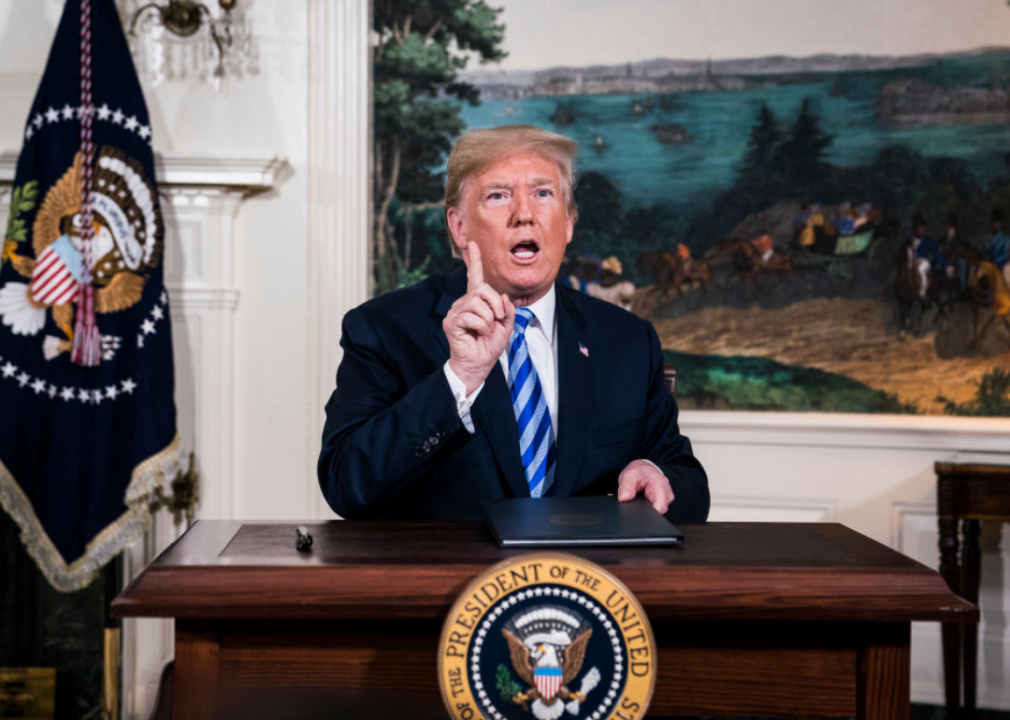
Trump claimed that the deal, in which the U.S. financially rewarded the country for curtailing some elements of its nuclear program, “is defective at its core.” Former President Barack Obama called the move a “serious mistake,” while allies like France, Germany, and the U.K. released a joint statement expressing “regret and concern” about Trump’s decision.
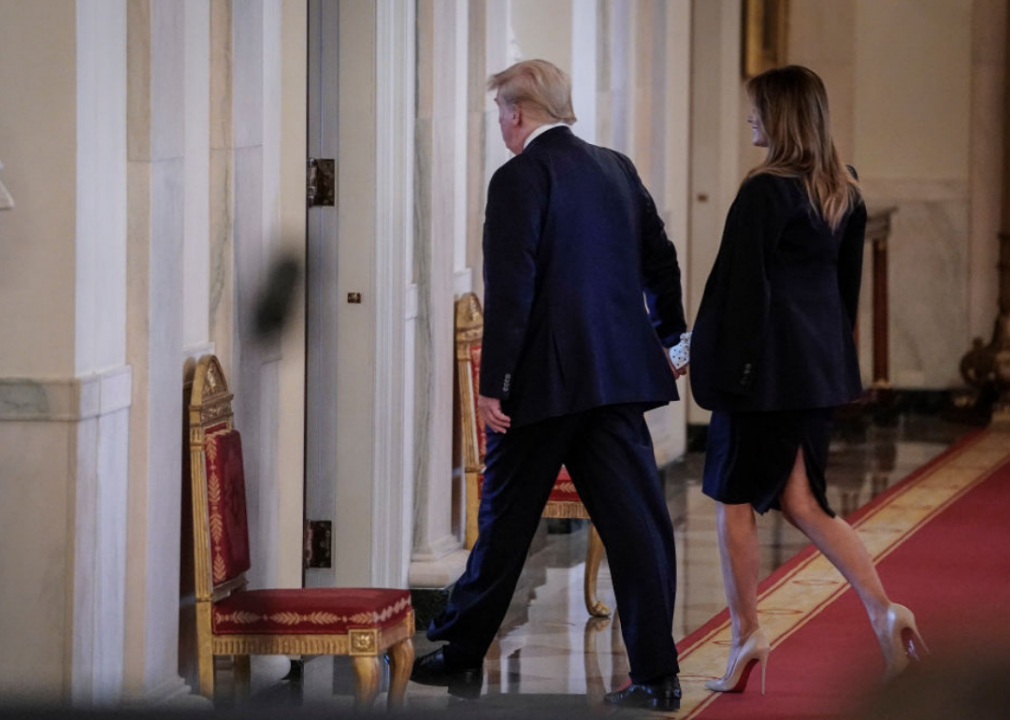
Impeachment hearings were conducted to investigate President Trump after he allegedly sought help from the Ukrainian government in the 2020 presidential election, and subsequently obstructed Congress. Although the House of Representatives impeached him in January 2020, the Senate ultimately acquitted the president.
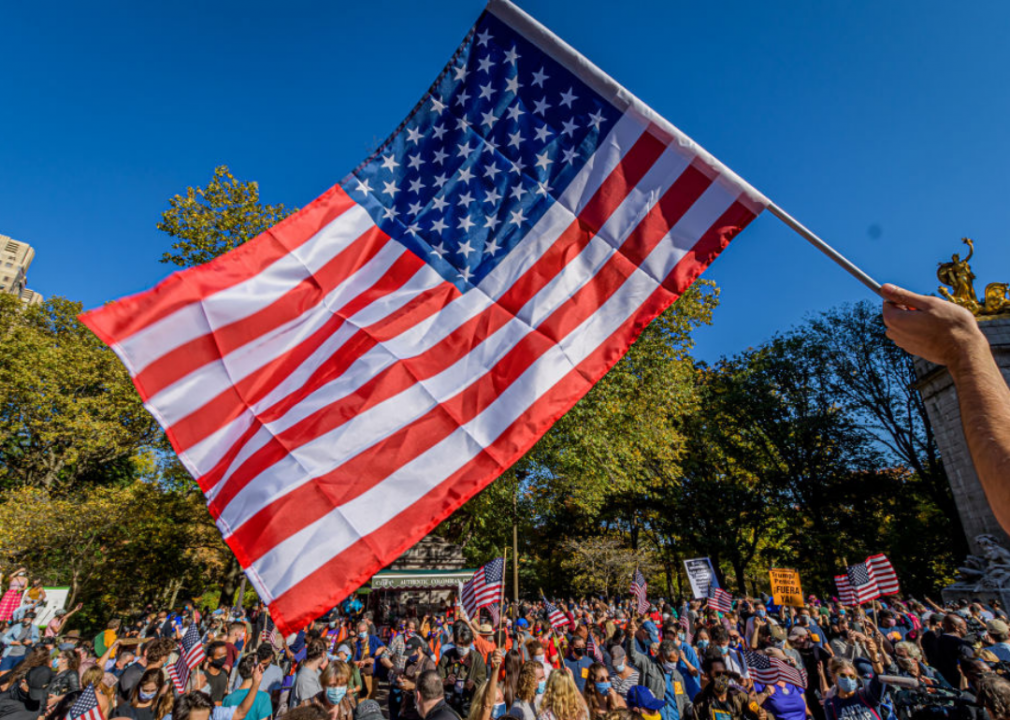
After a year in which the U.S. was ravaged by the deadly COVID-19 pandemic and a presidential term filled with controversy, President Trump became one of the few recent presidents to lose his reelection bid when Democrat Joe Biden became the president-elect after days of waiting for official election results. Republicans also lost control of the Senate after losing both of Georgia’s run-off elections in January 2021.
You may also like: Heart and Soul of the Republican Party

Even after his departure from the White House, Trump continued to have an influence on the Republican party. Over 150 Republicans opposed to the ex-president and his policies have splintered into their own movement, committed to “evidence-based policymaking and honest discourse" with a “conservative to moderate point-of-view" led by Liz Cheney and others. The divided party has evolved into name calling of those seeking moderation and collaboration RINO's. The Big Tent Welcome to All as under the years of Lincoln or Reagan is seem as a losing proposition by some. The midterms of 2022 will show rather the influence of Trump continues forward or if the moderates of yesteryear regain a foothold in leadership. The presidential race of 2024 will unofficially begin on November 9th and the results from the 8th will determine the front runners in that bid for the Republican nomination for president.
You may also like: Heart and Soul of the Republican Party
National Story by Abby Monteil, local and state coverage by Chris Edwards AlamogordoConservativeDaily.org & AlamogordoTownNews.com